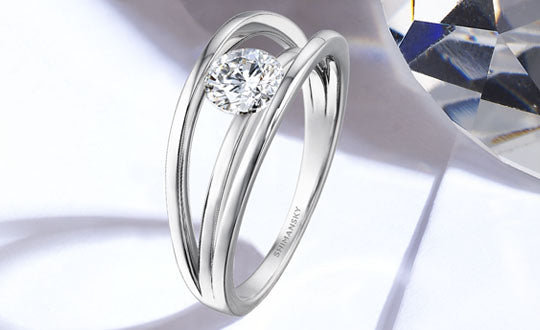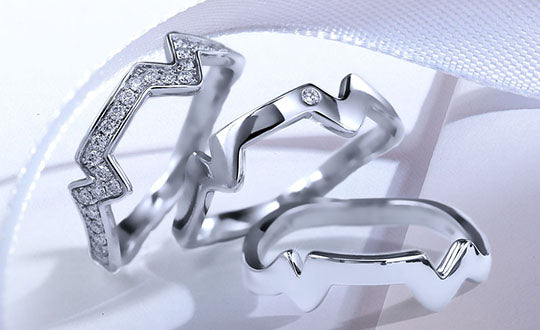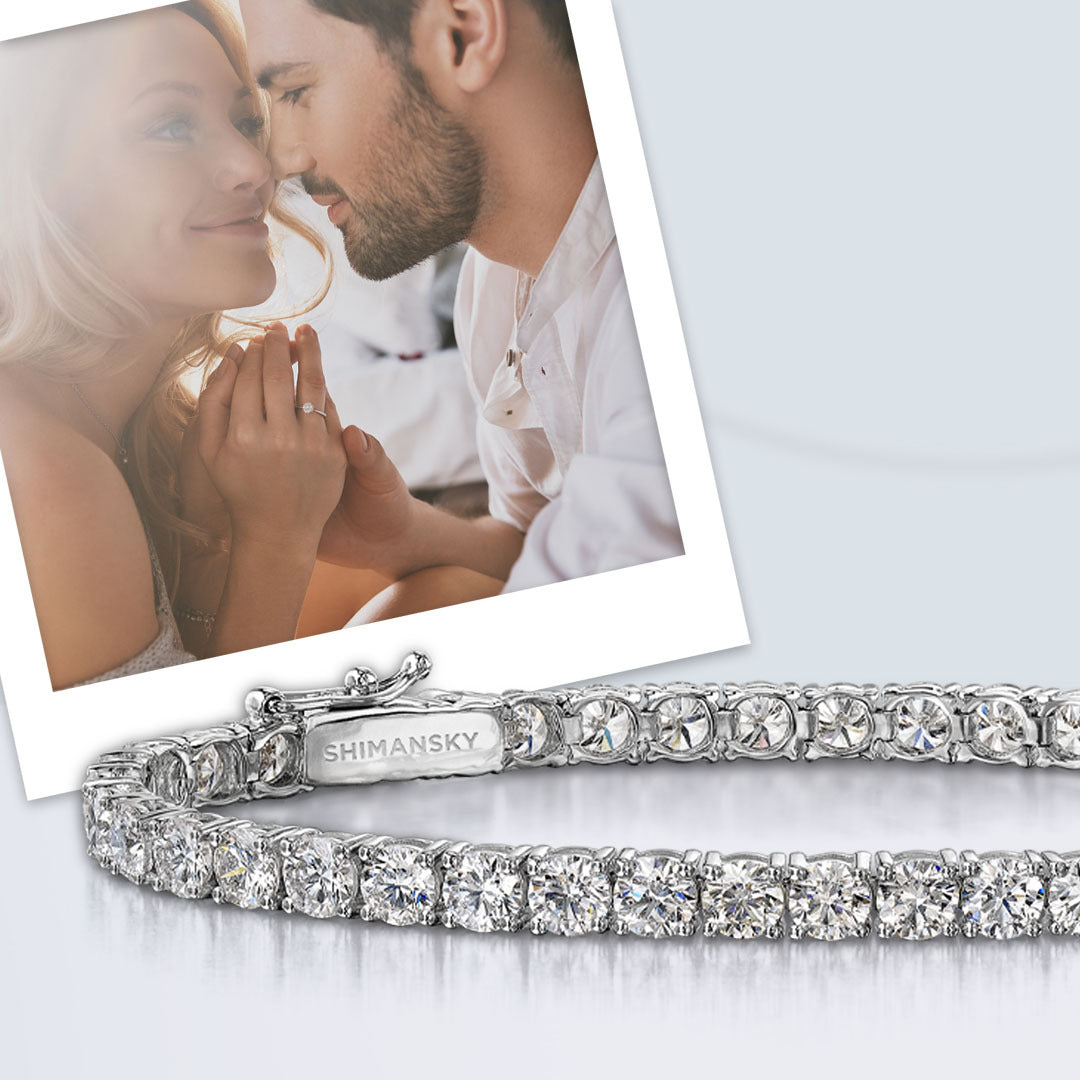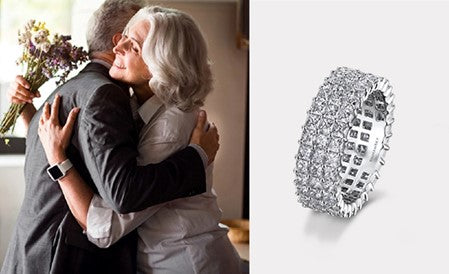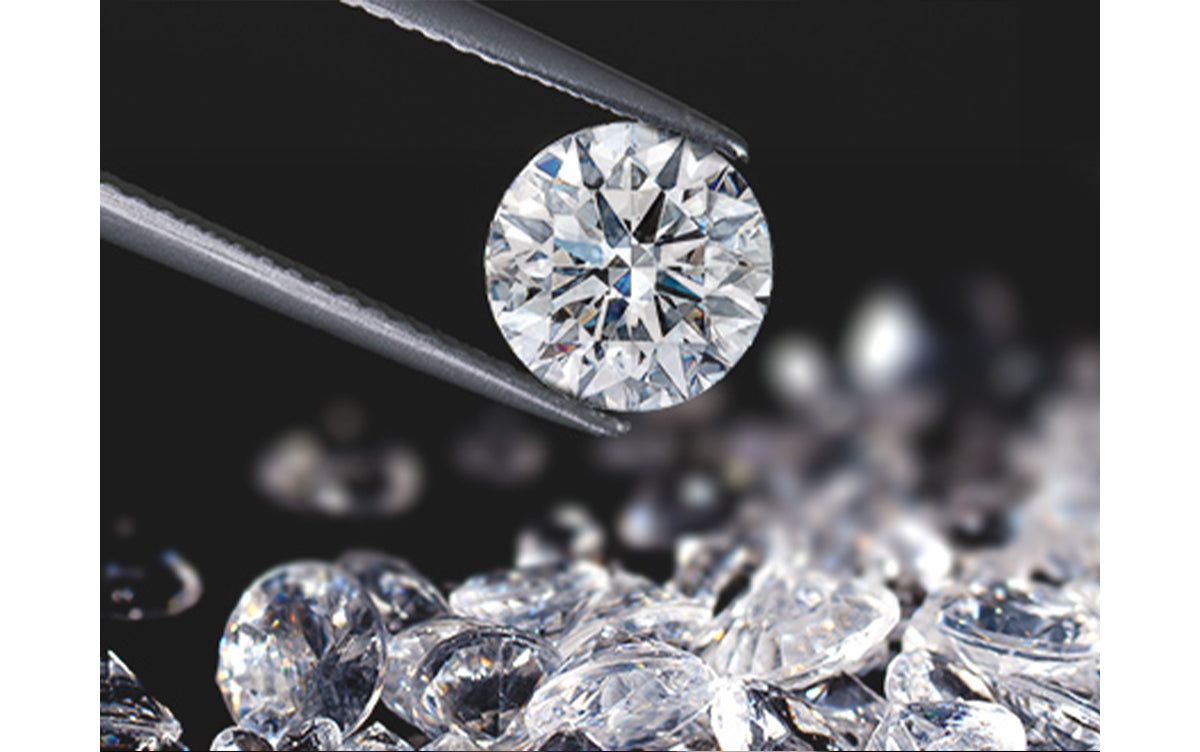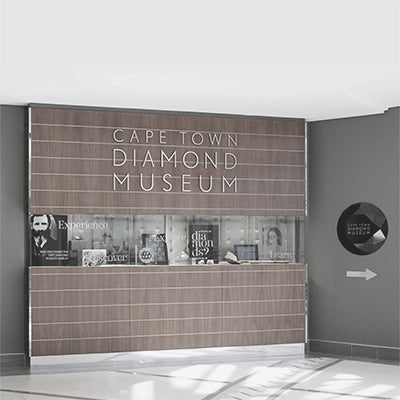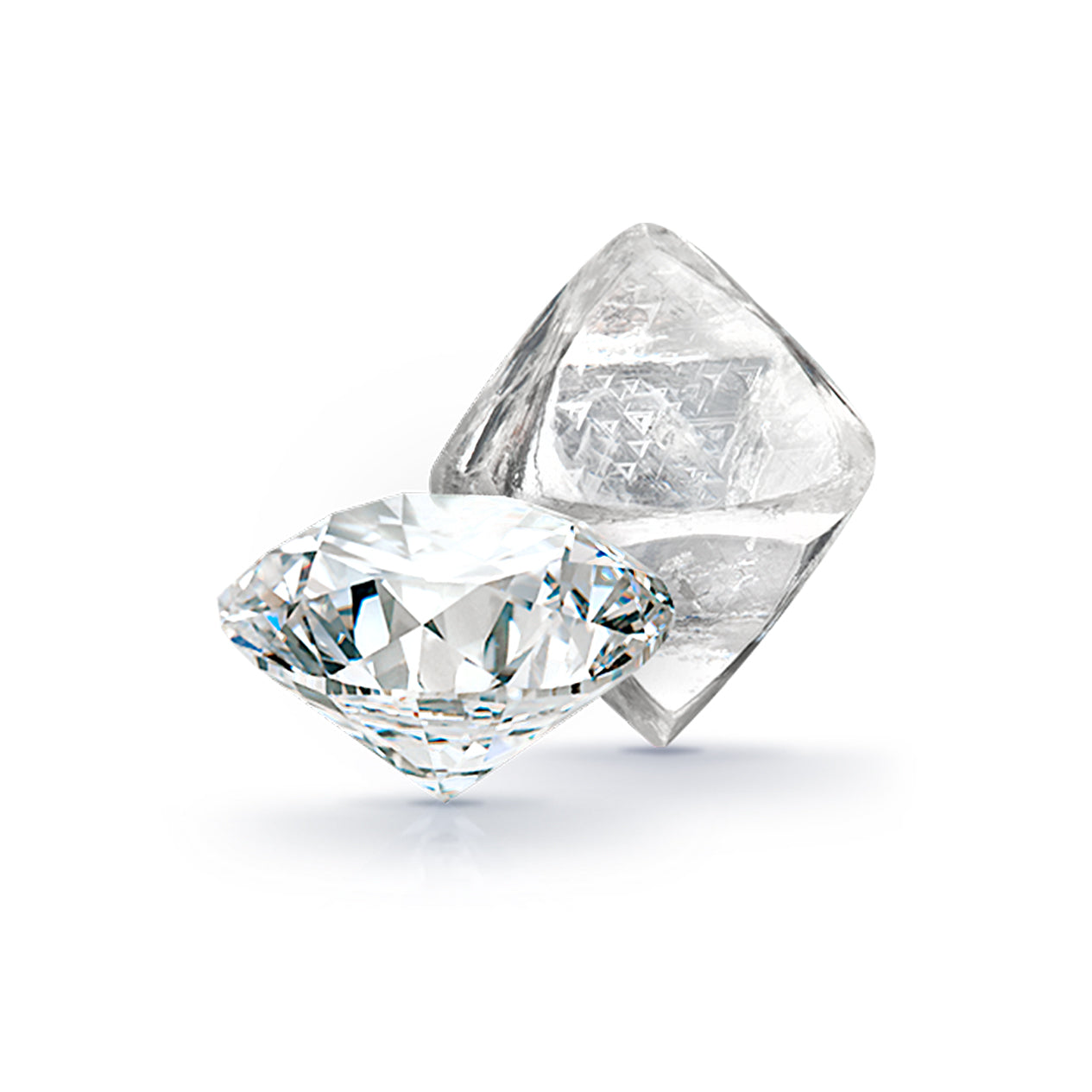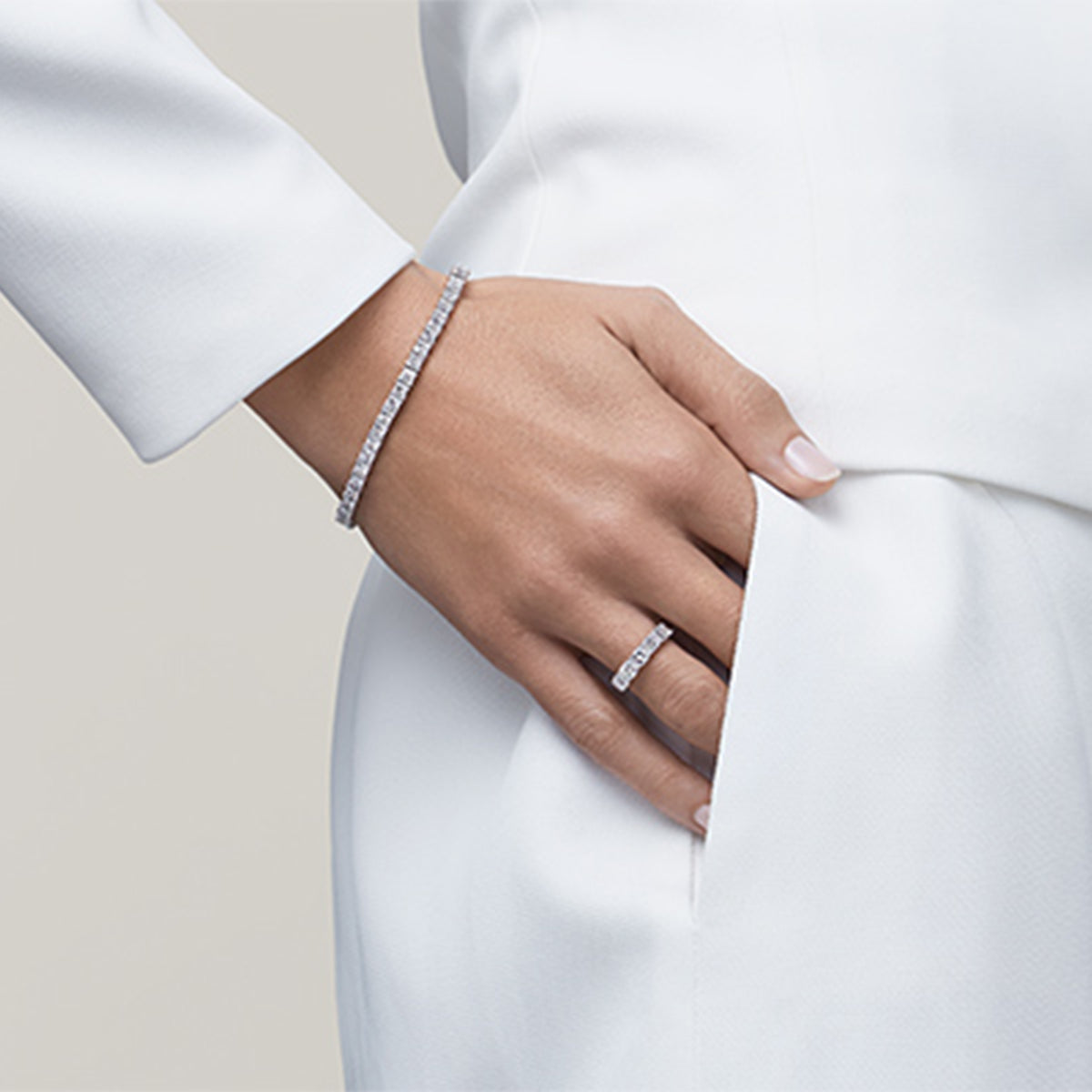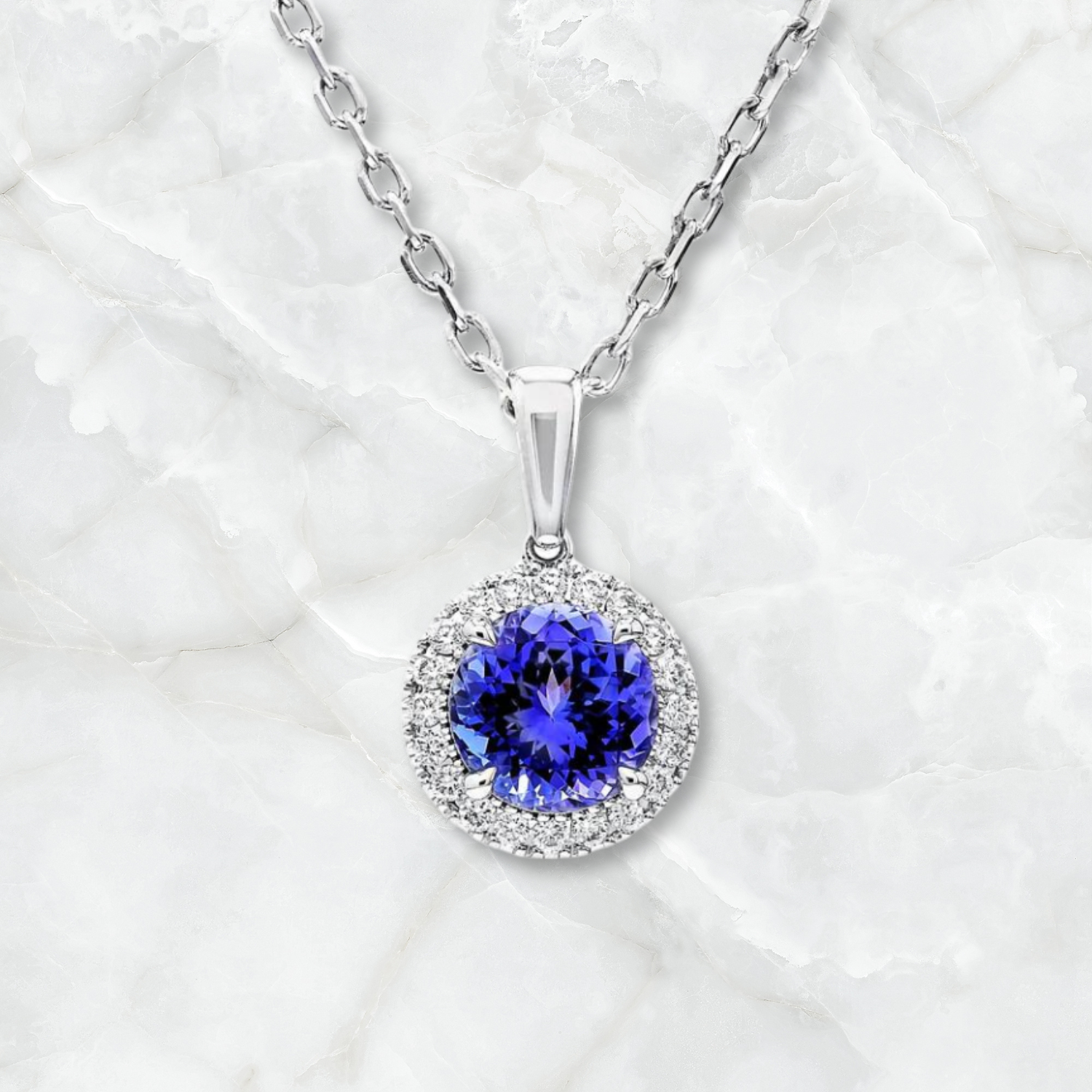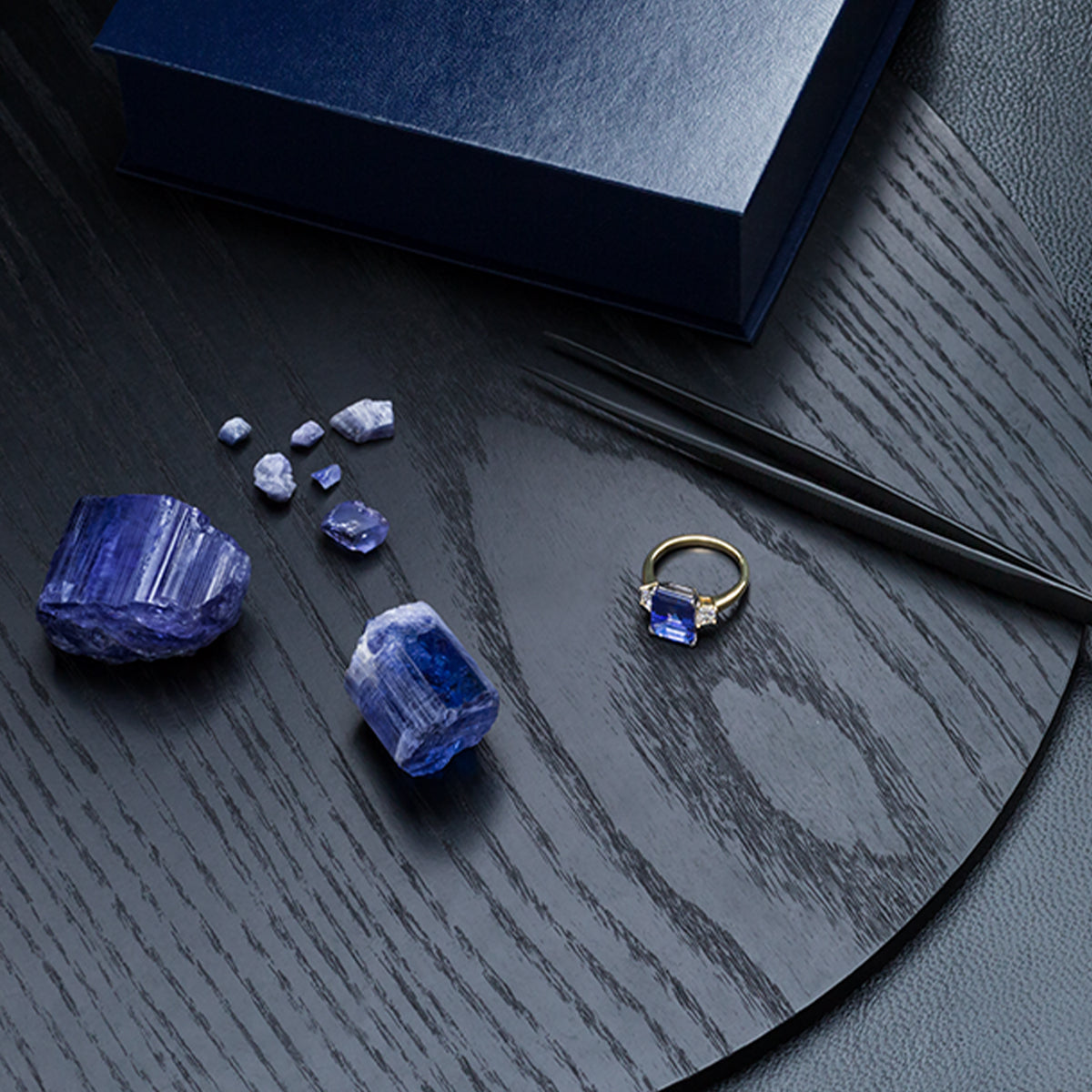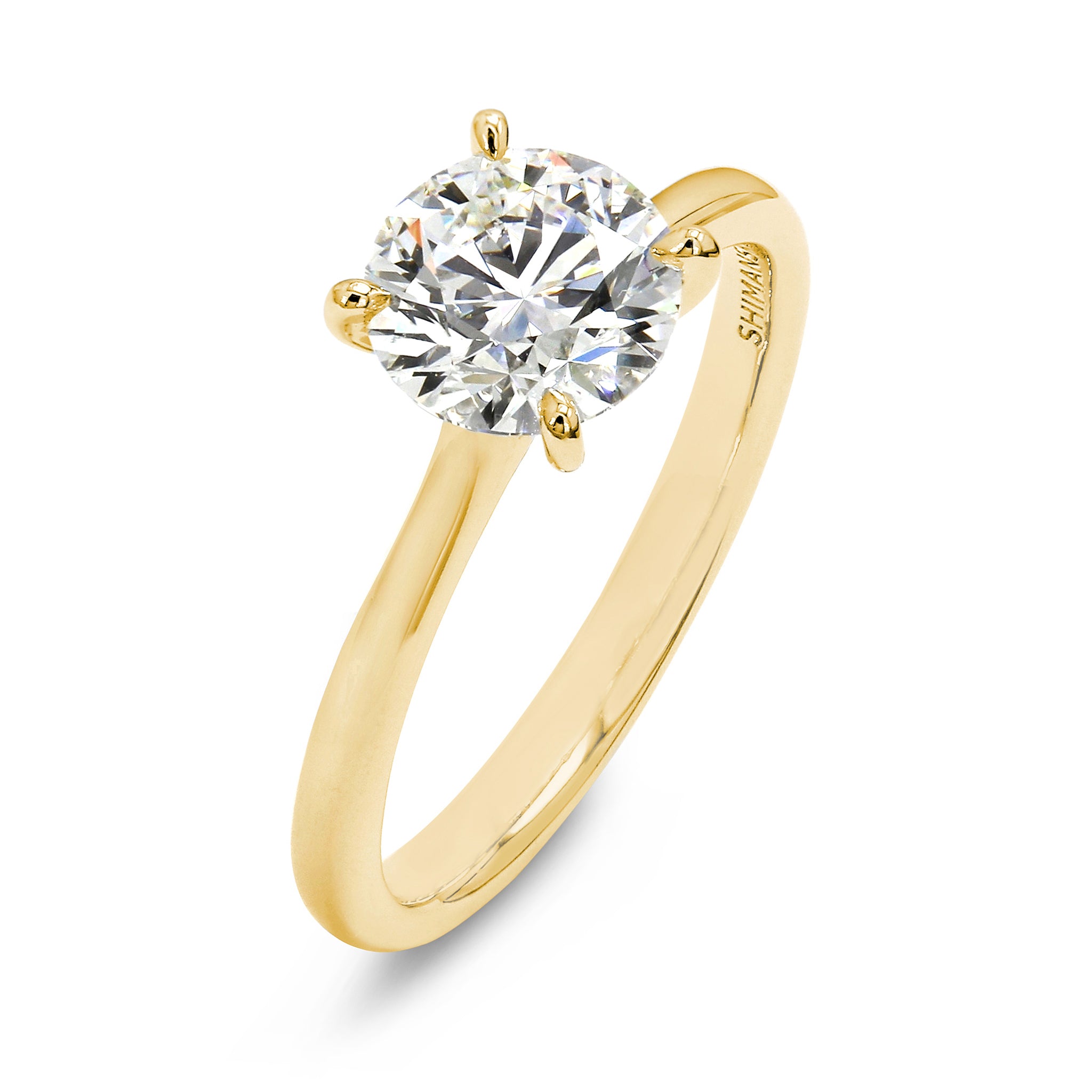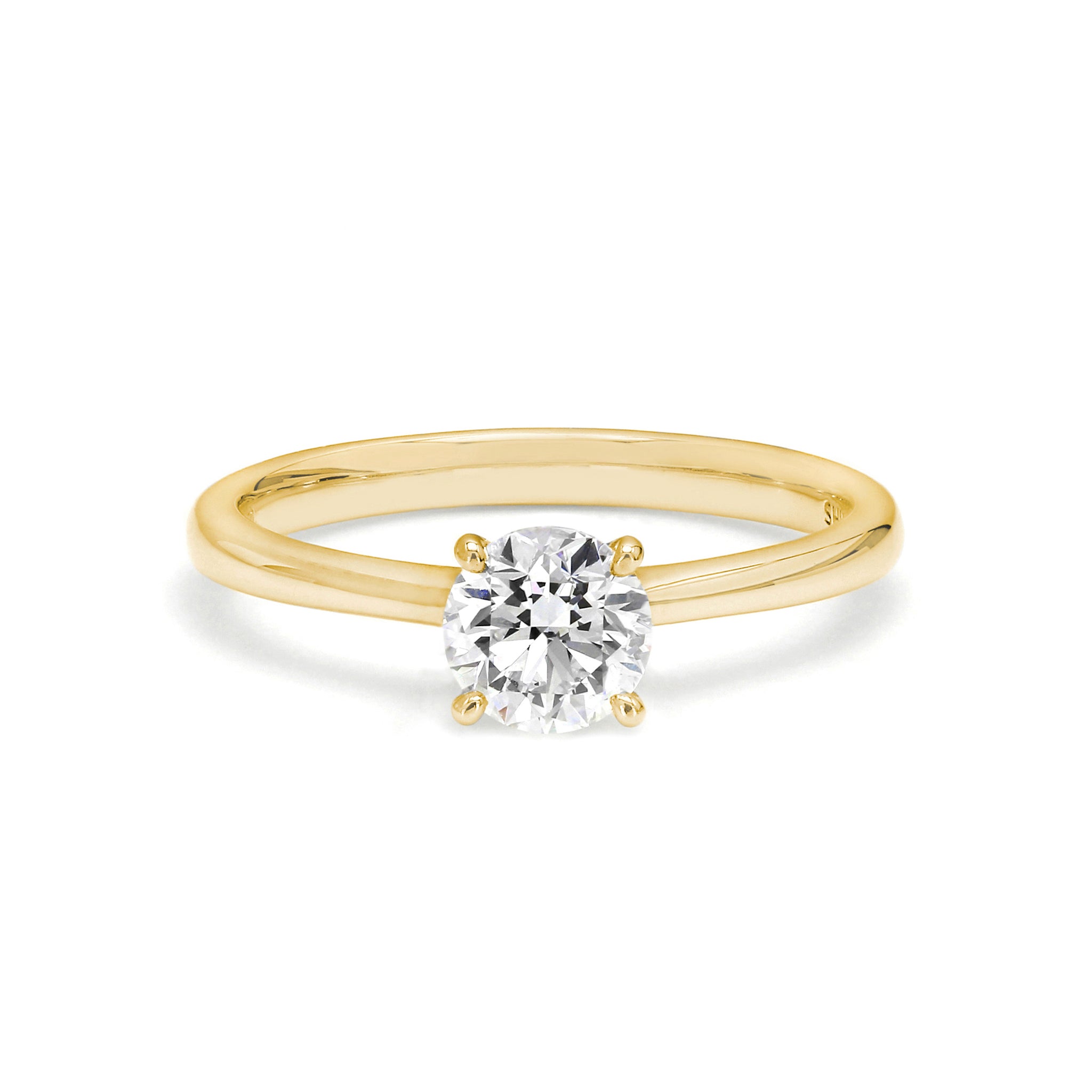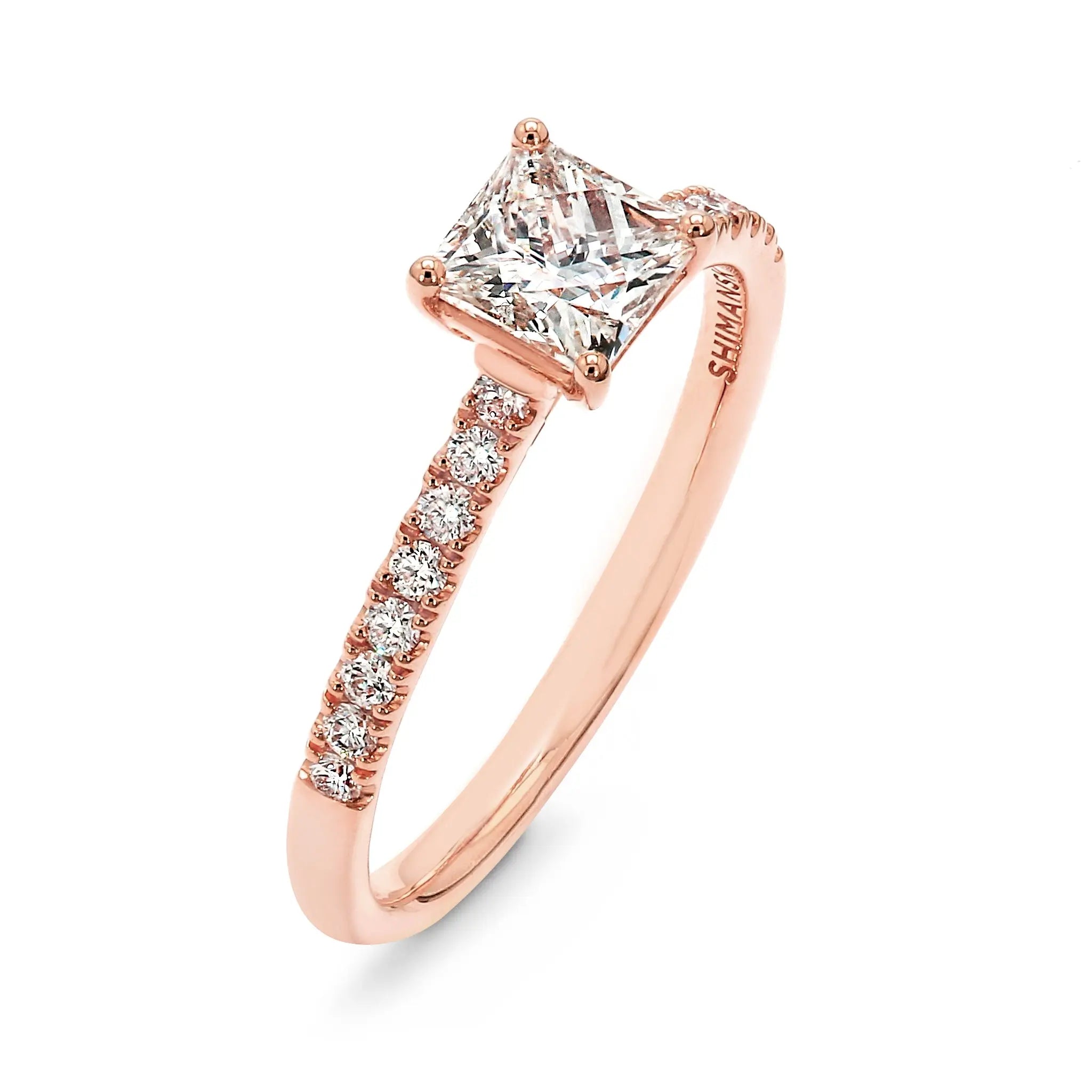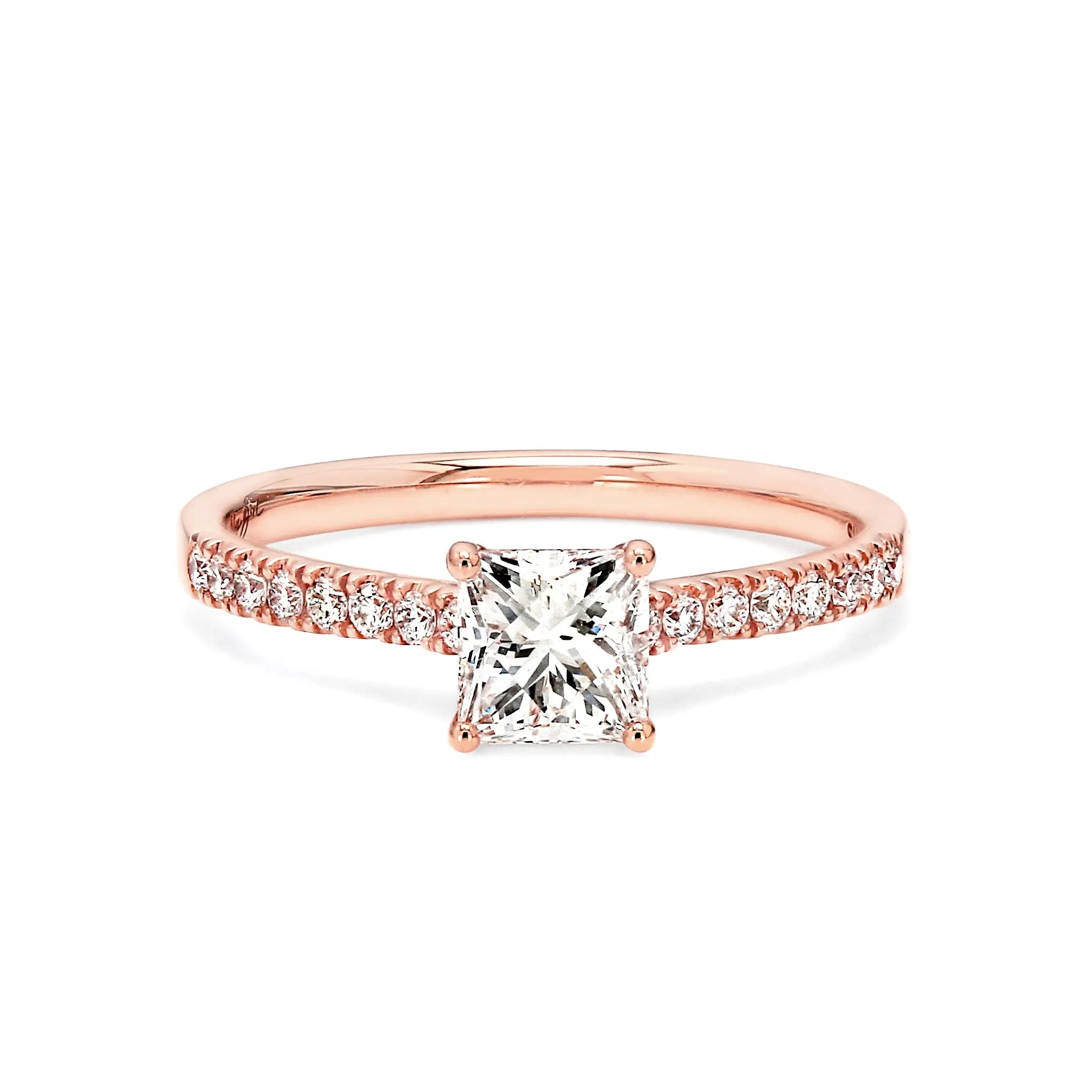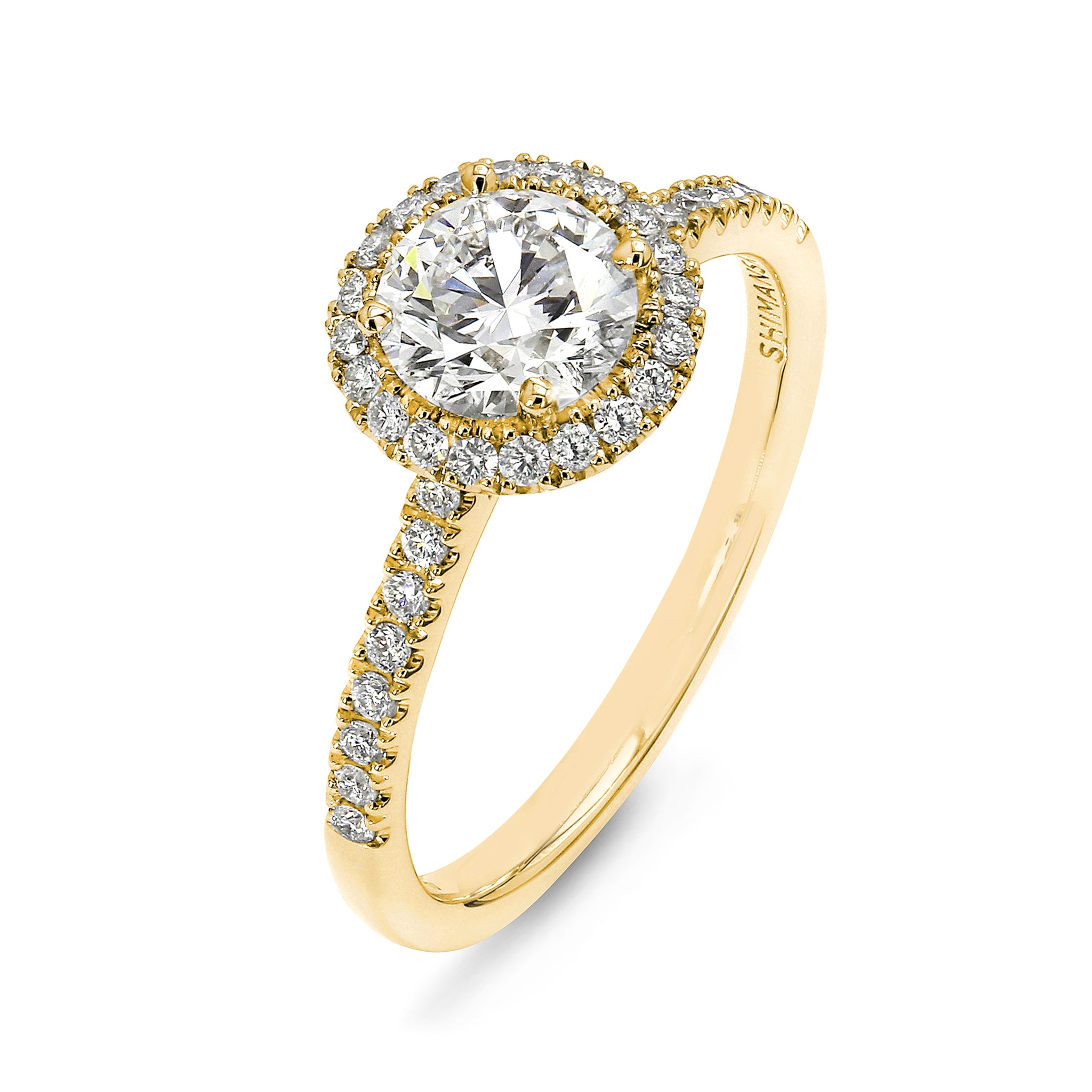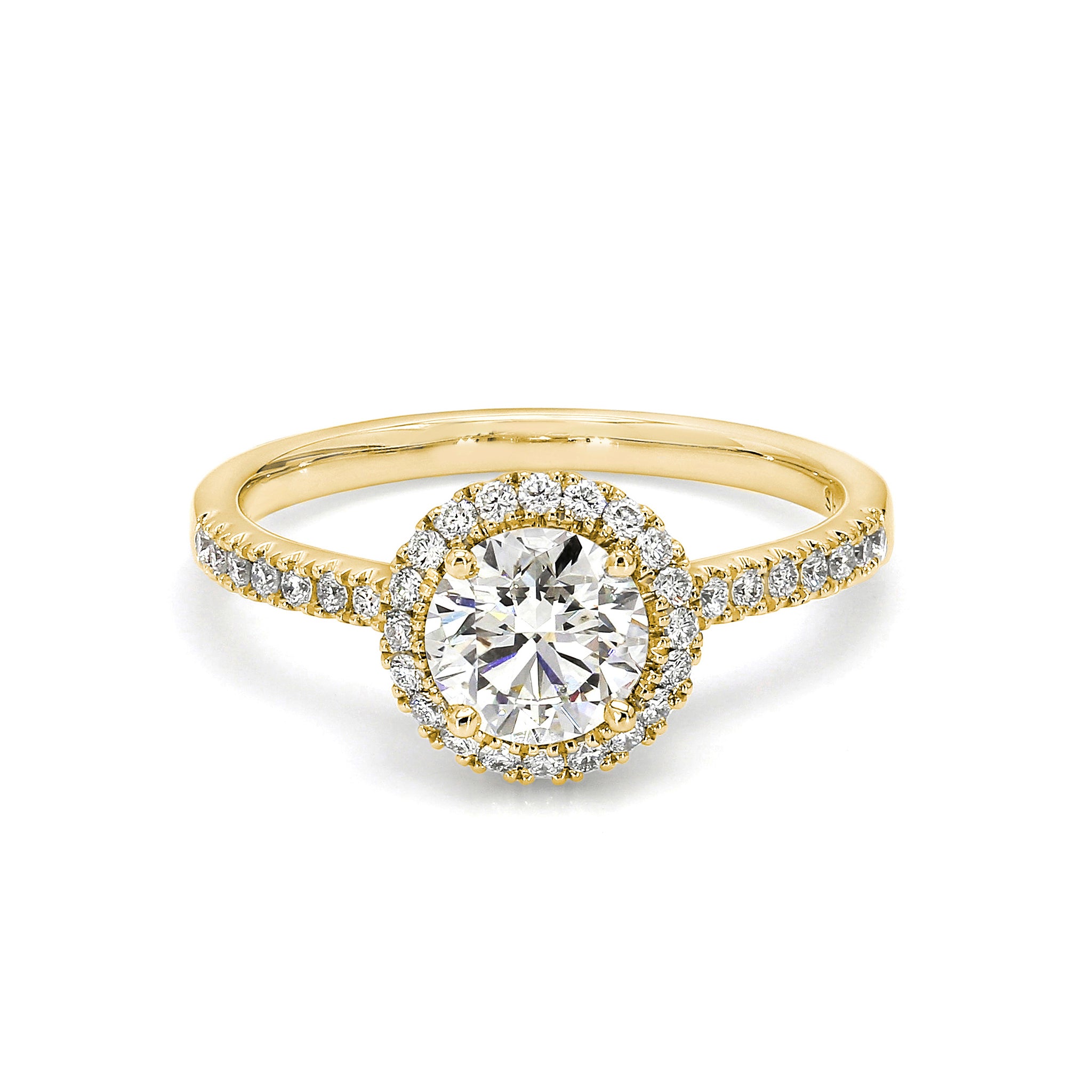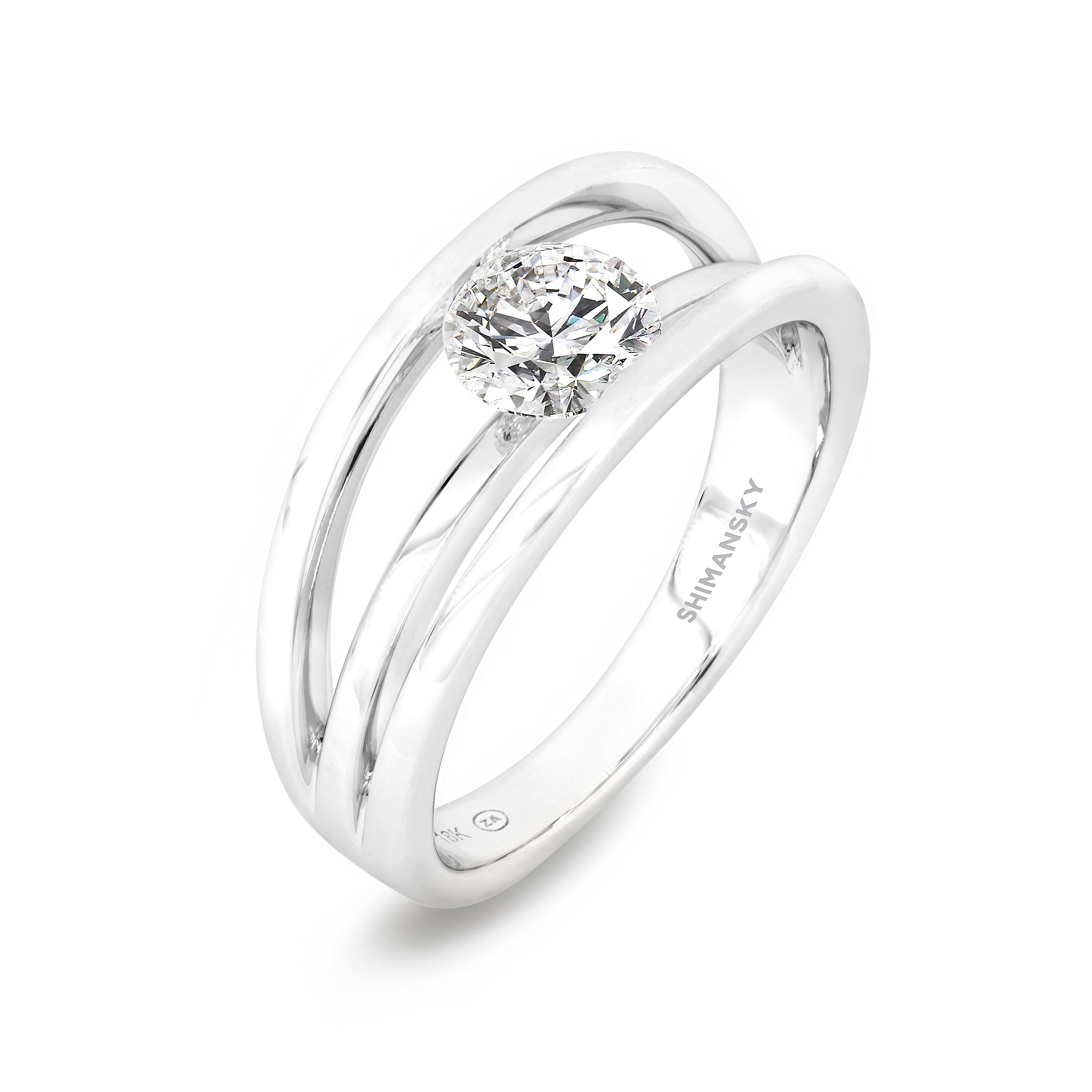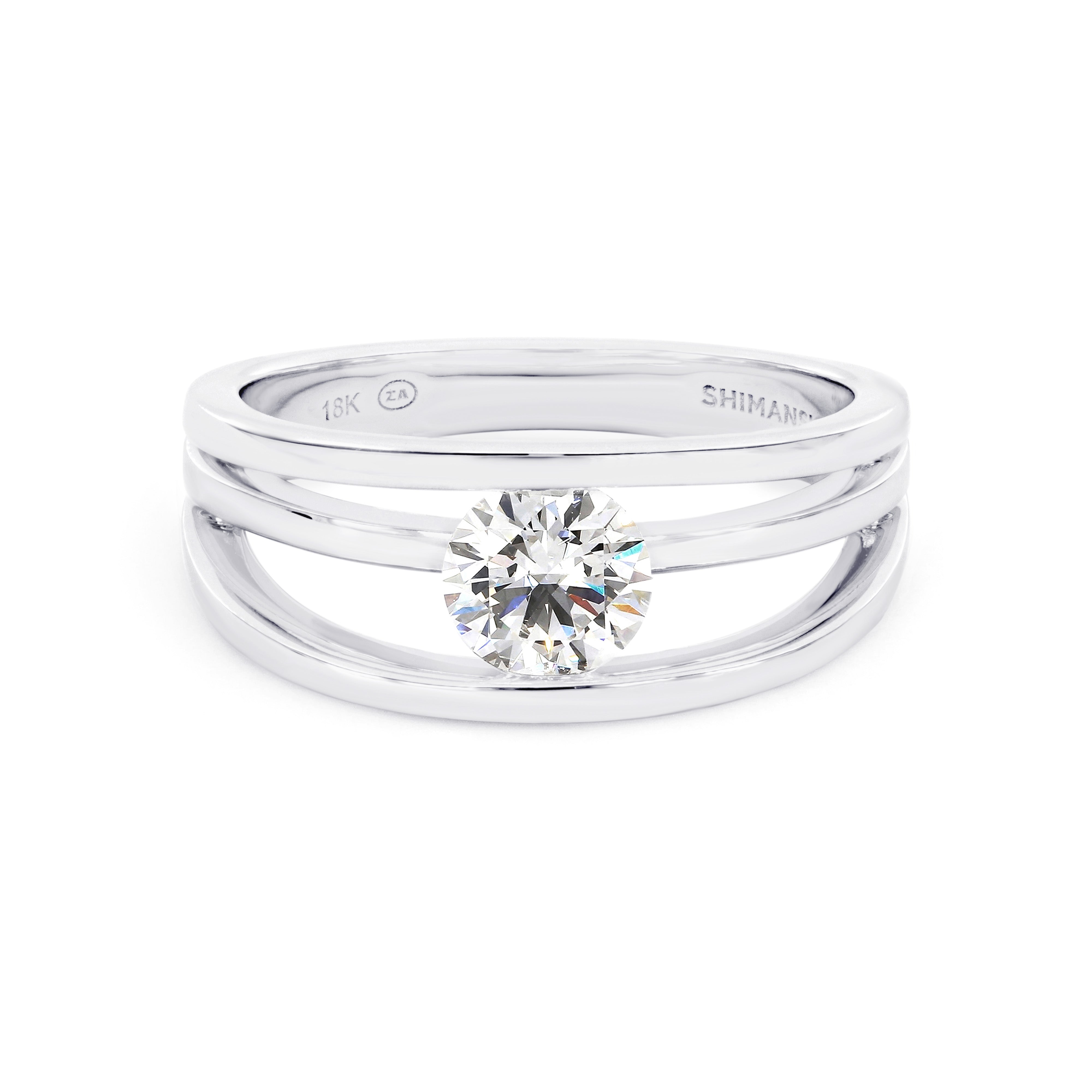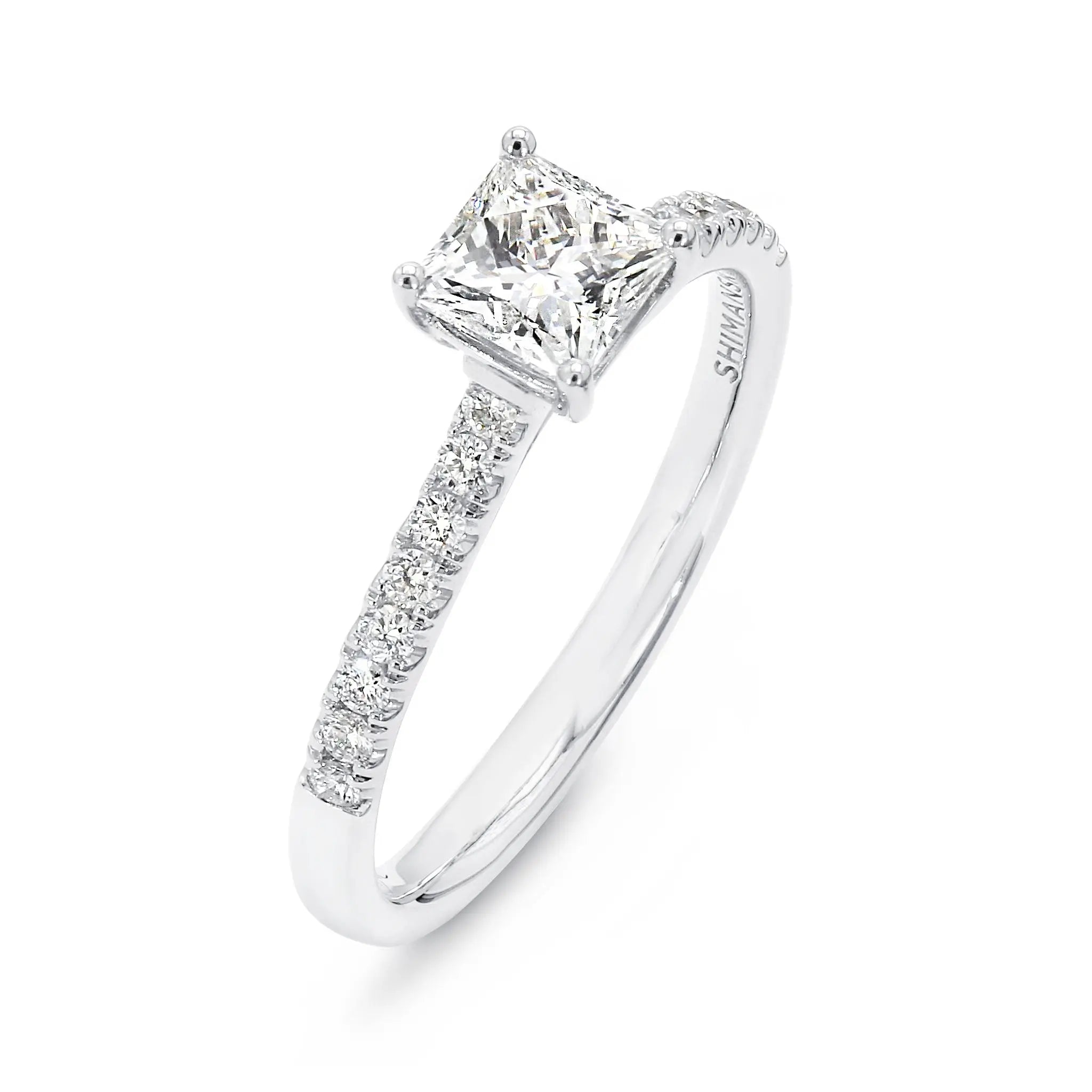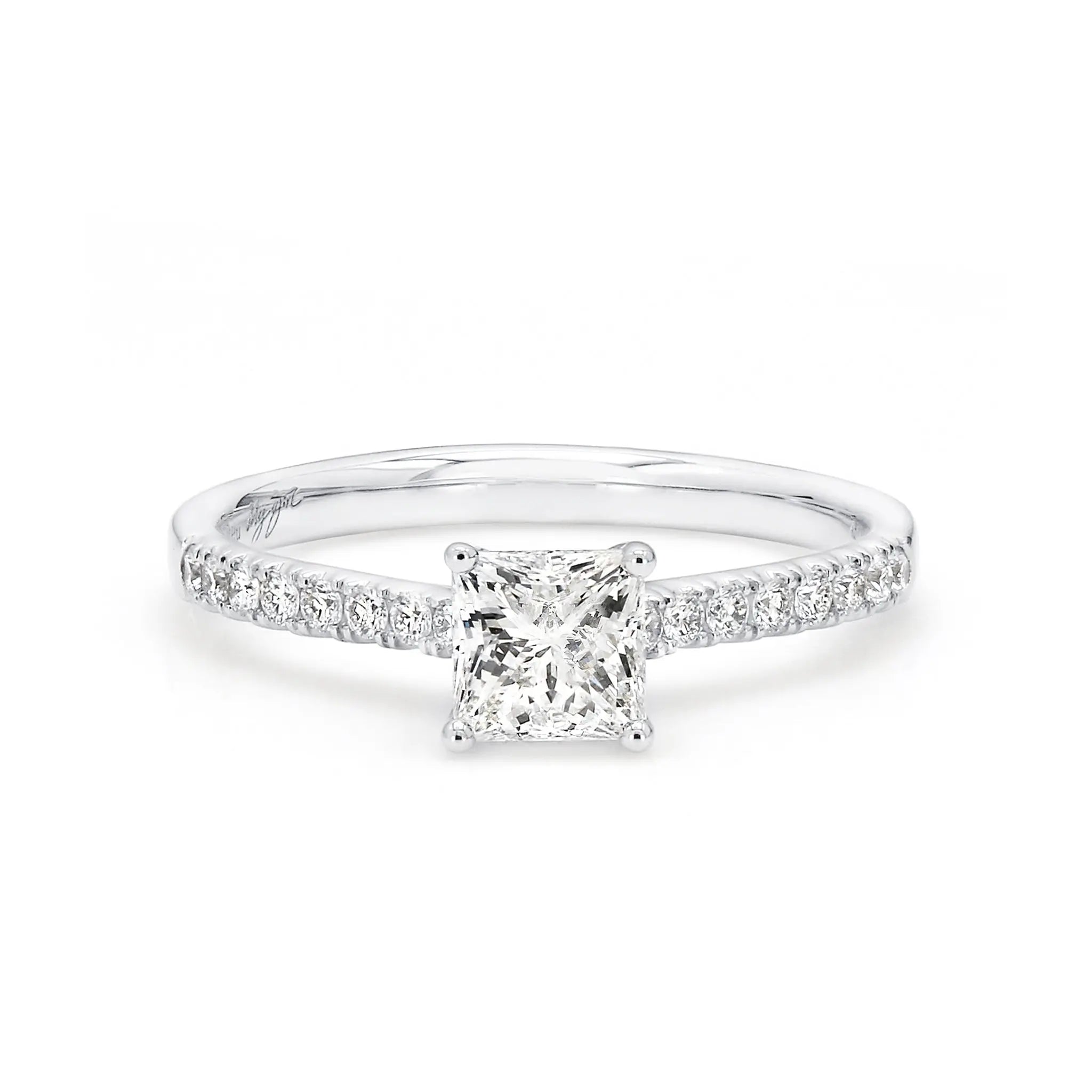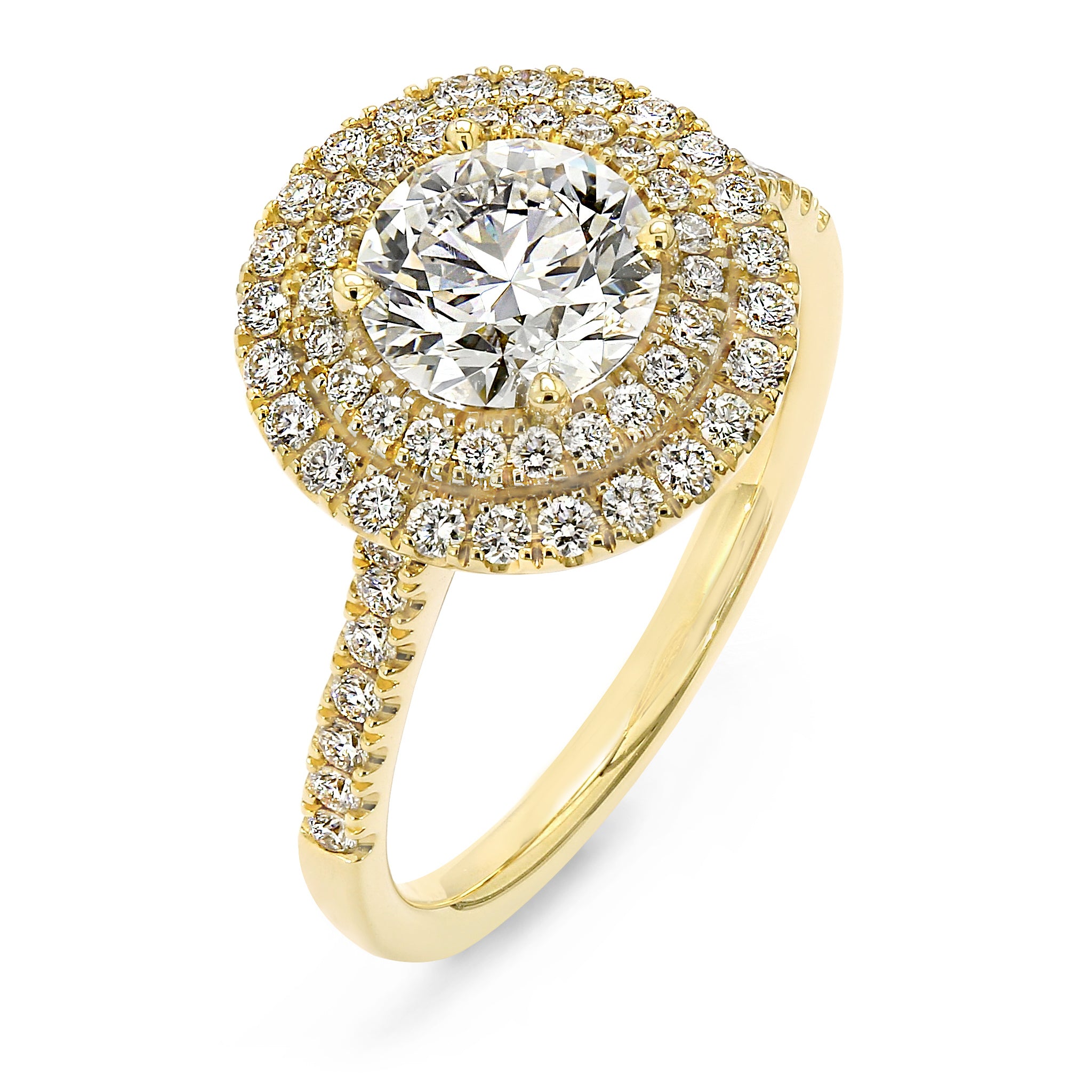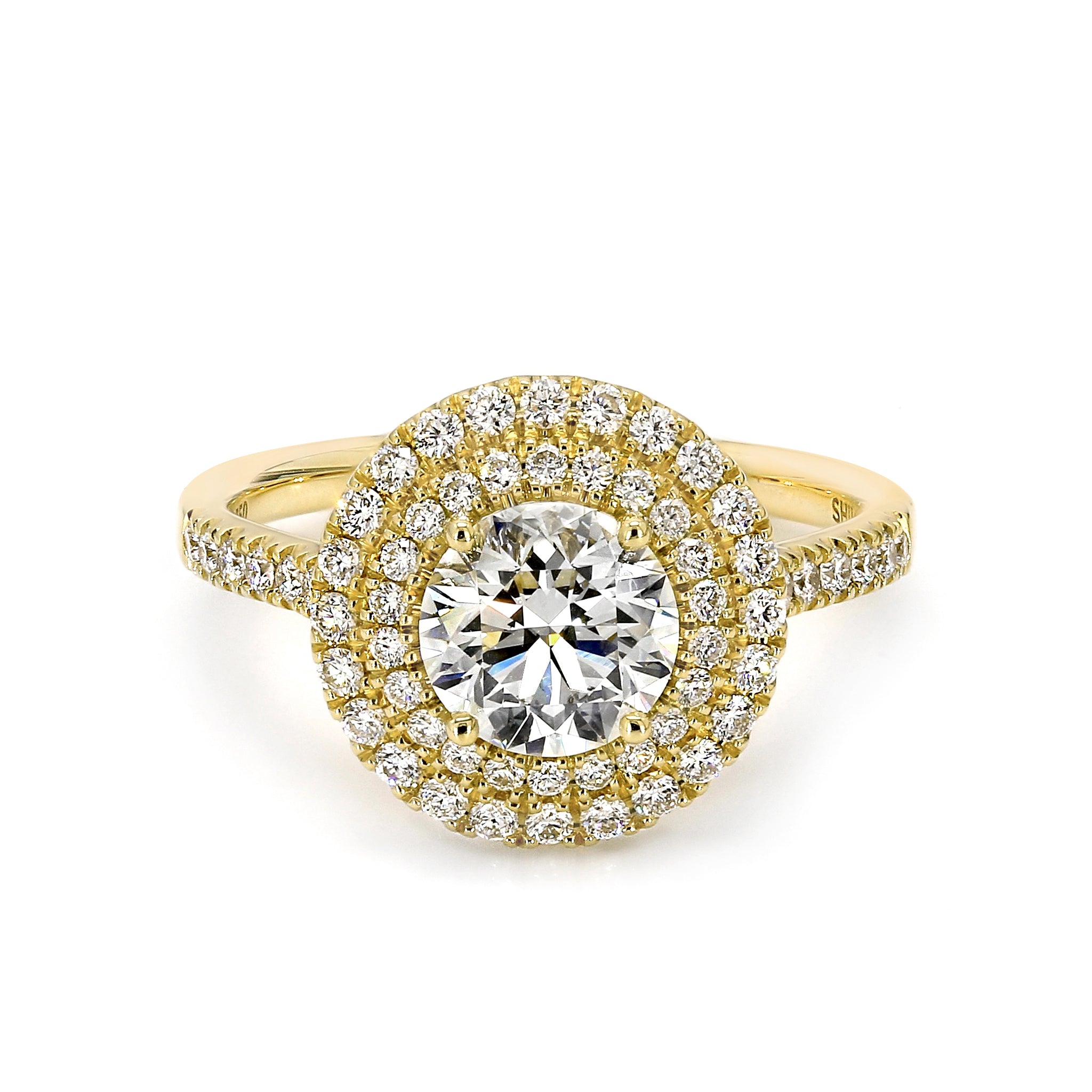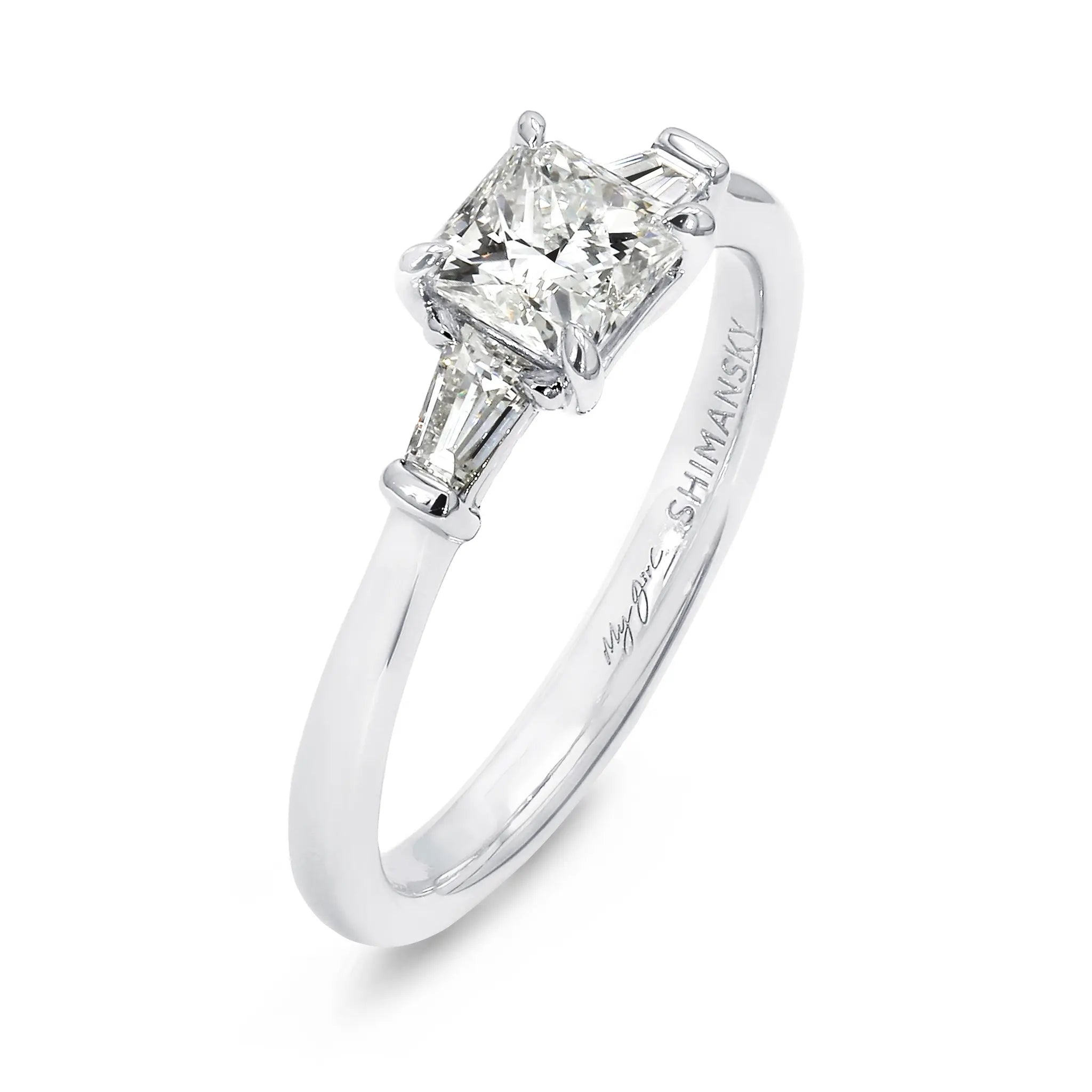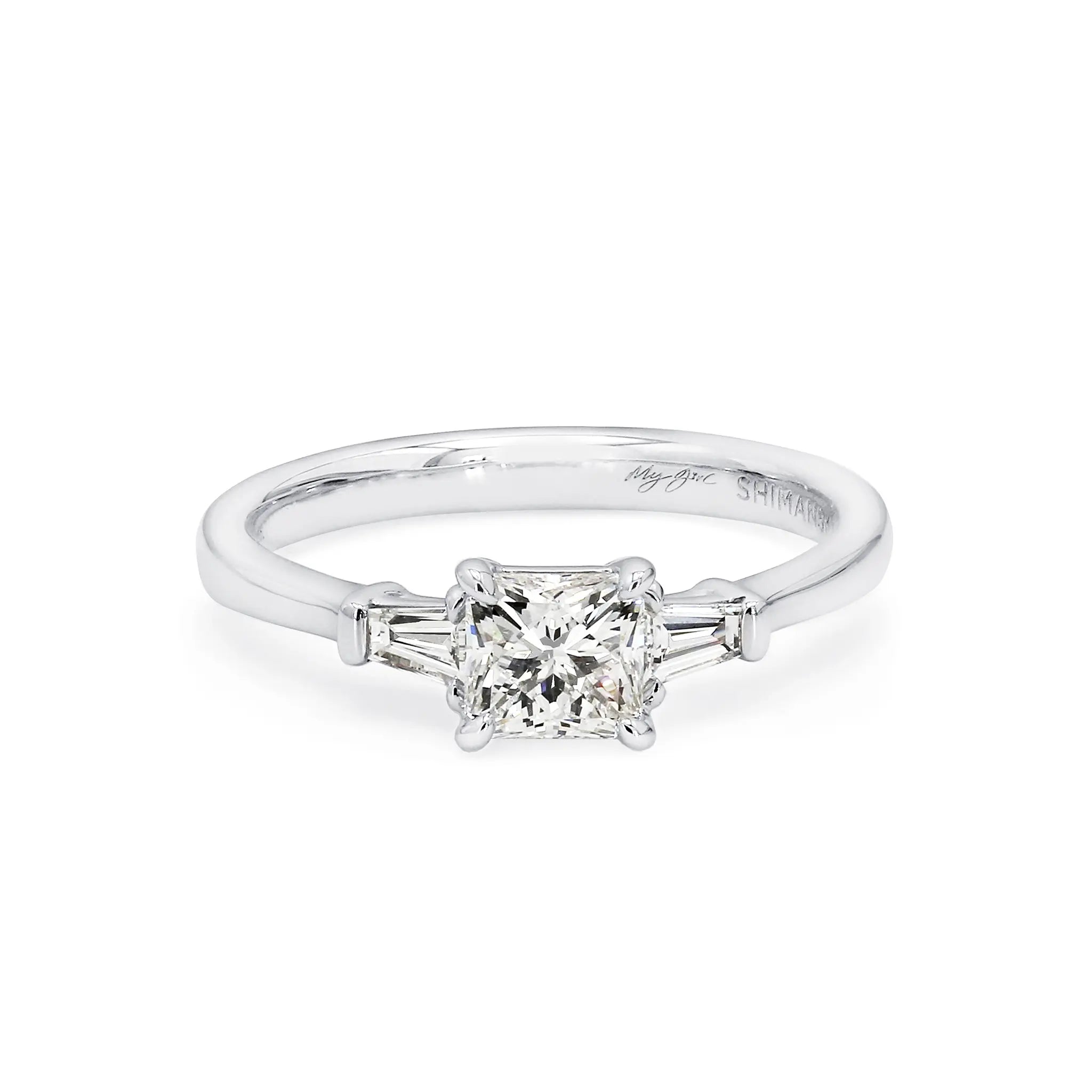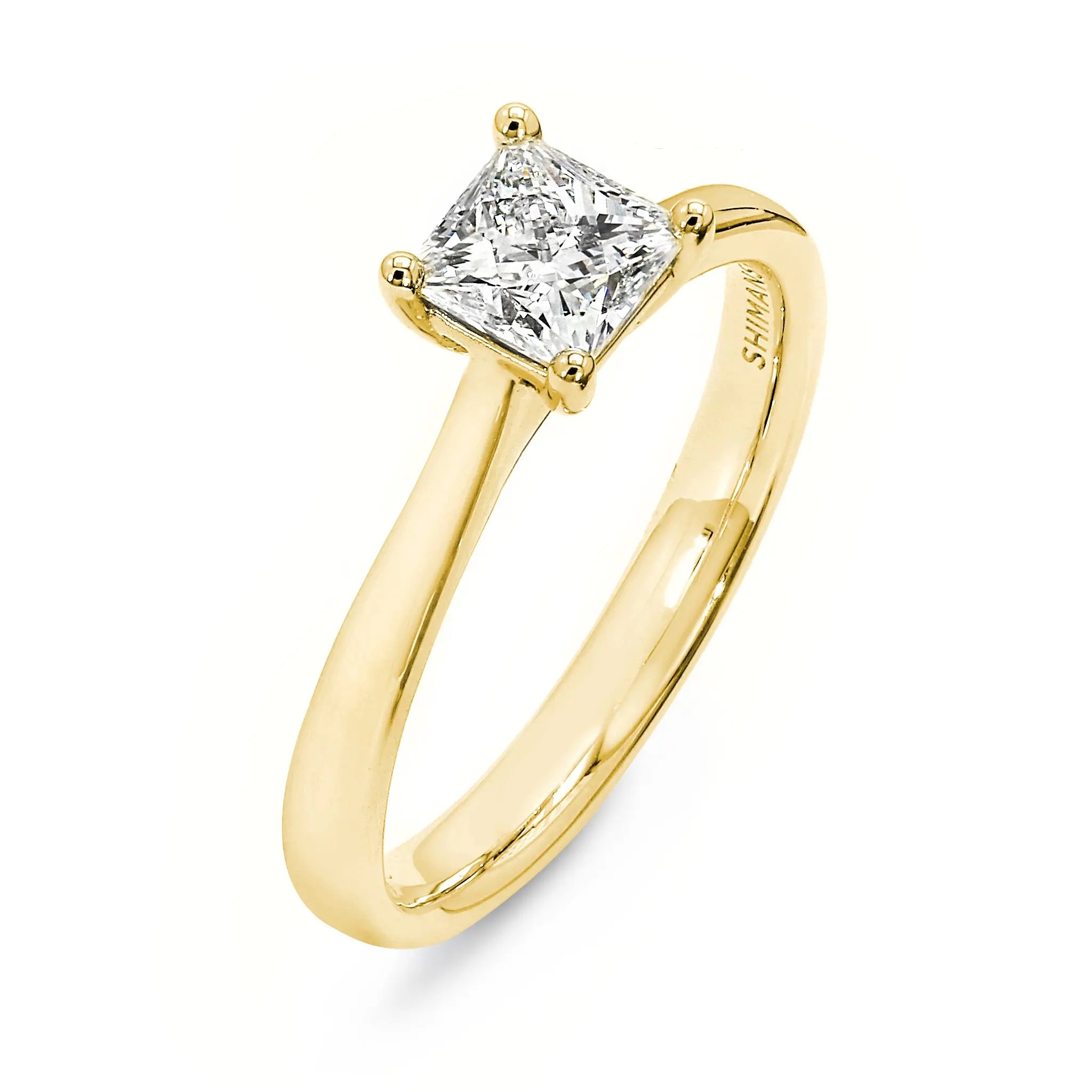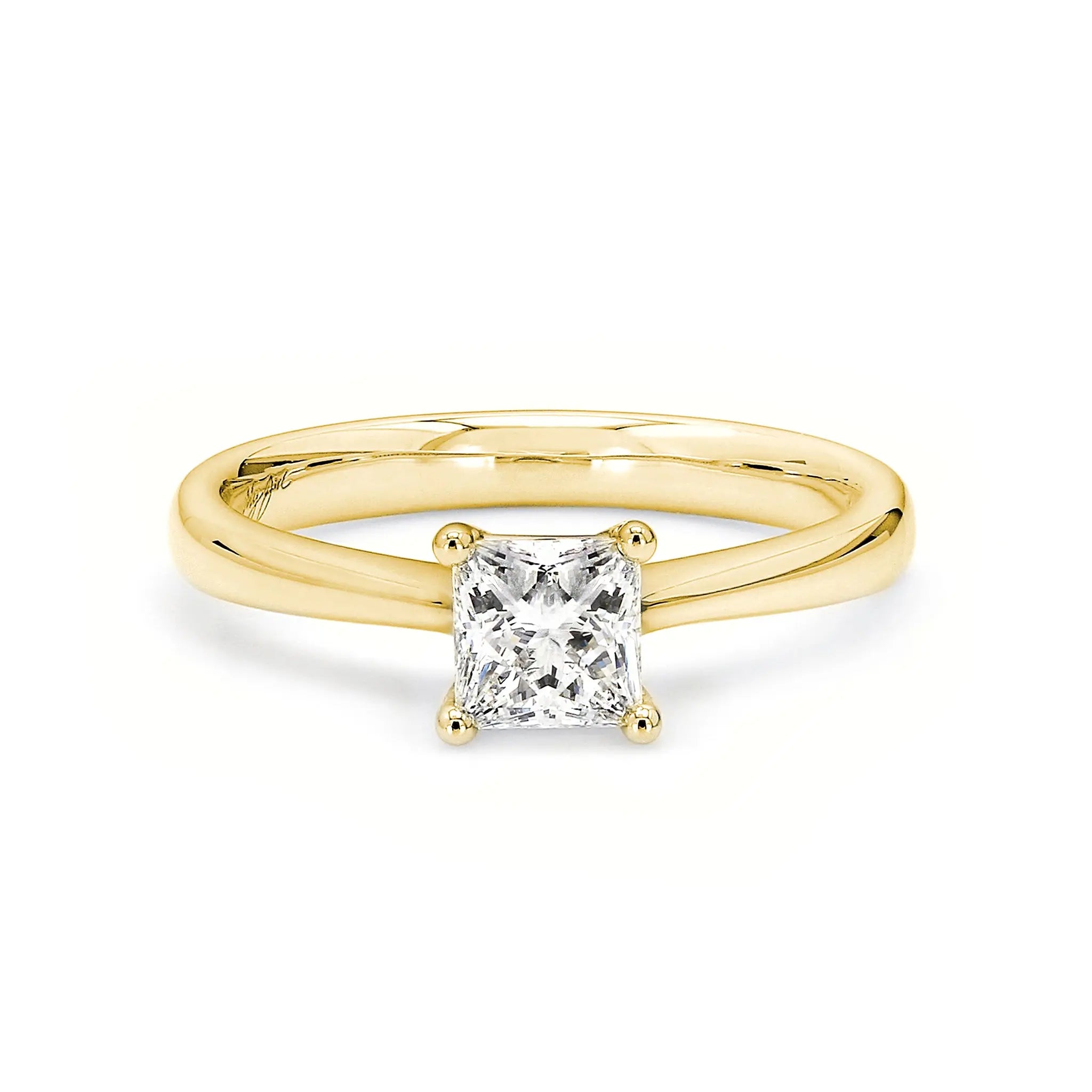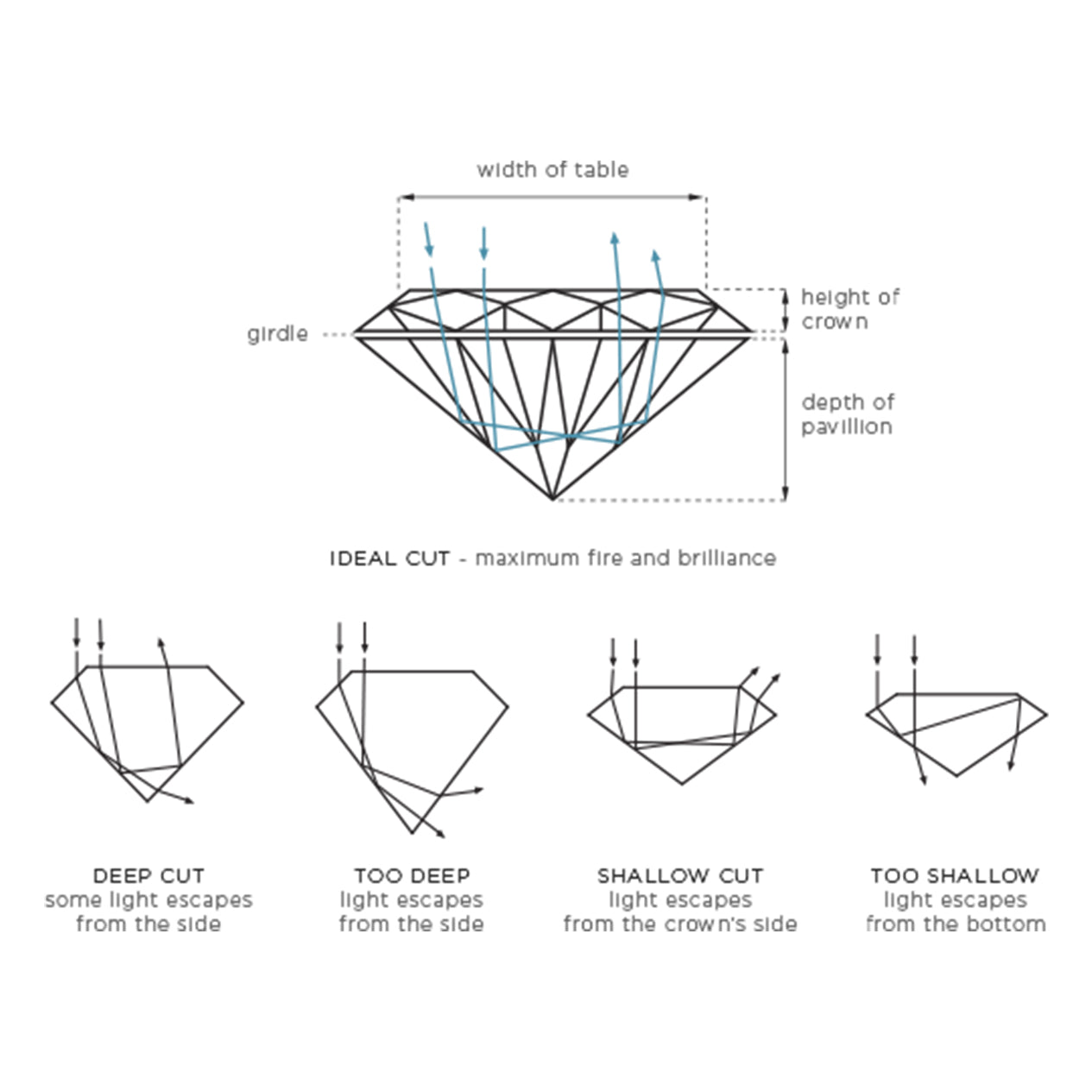
1. Diamond Cut
Although diamonds have been in existence for billions of years, it is only in recent history that man discovered a way in which to intensify a rough diamond’s beauty: By cutting various facets into it and polishing each of those facets to increase its brilliance.
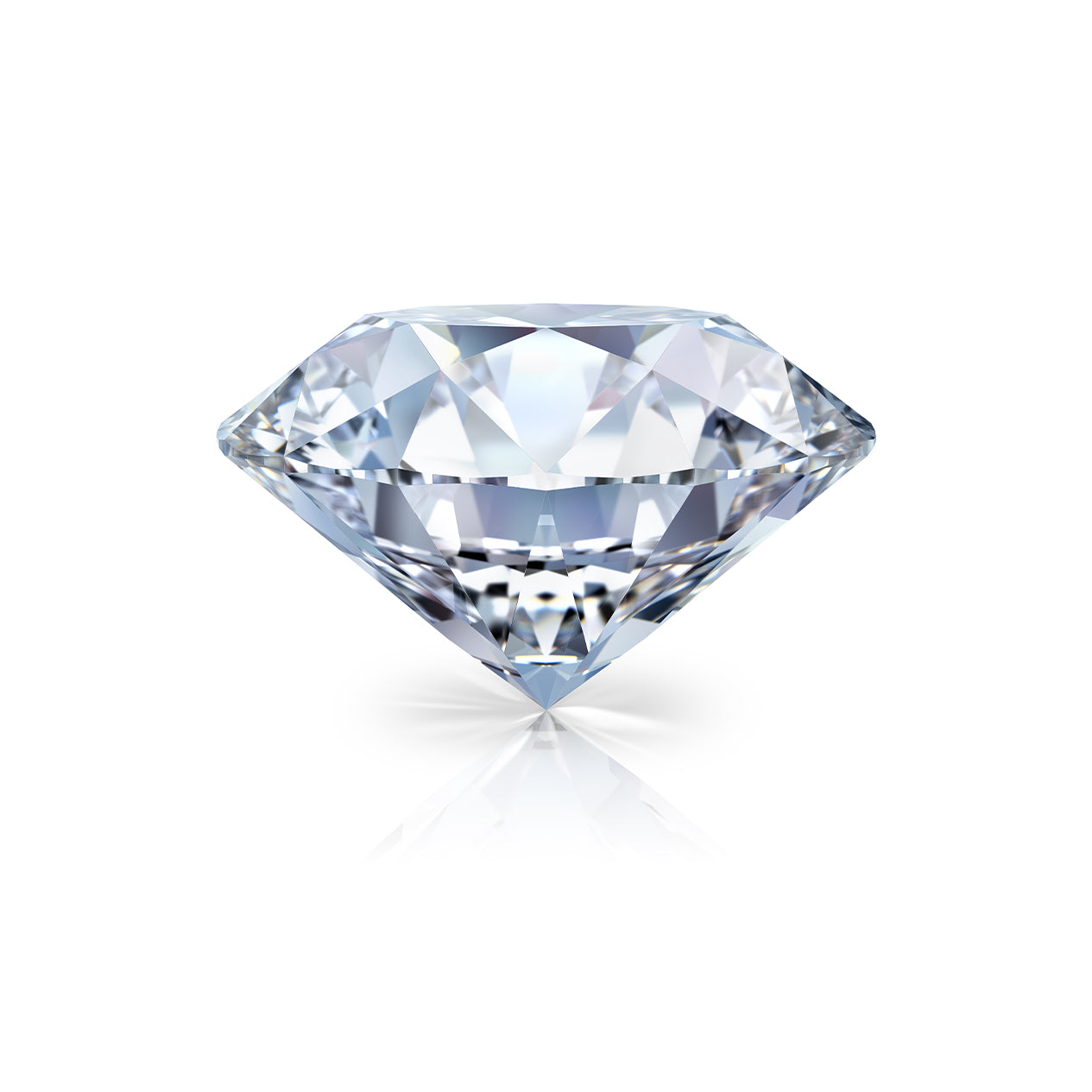
Diamonds are known for their brilliant sparkle and the intensity in which they reflect light. A diamond’s cut is one of the most important (and visual) aspects to consider when grading a diamond, as it directly determines the diamond’s fire, brilliance and scintillation. Often confused with a diamond’s shape (round, princess, emerald, cushion, etc.) the cut of a diamond refers to how well the diamond has been cut and polished, regardless of its final shape.
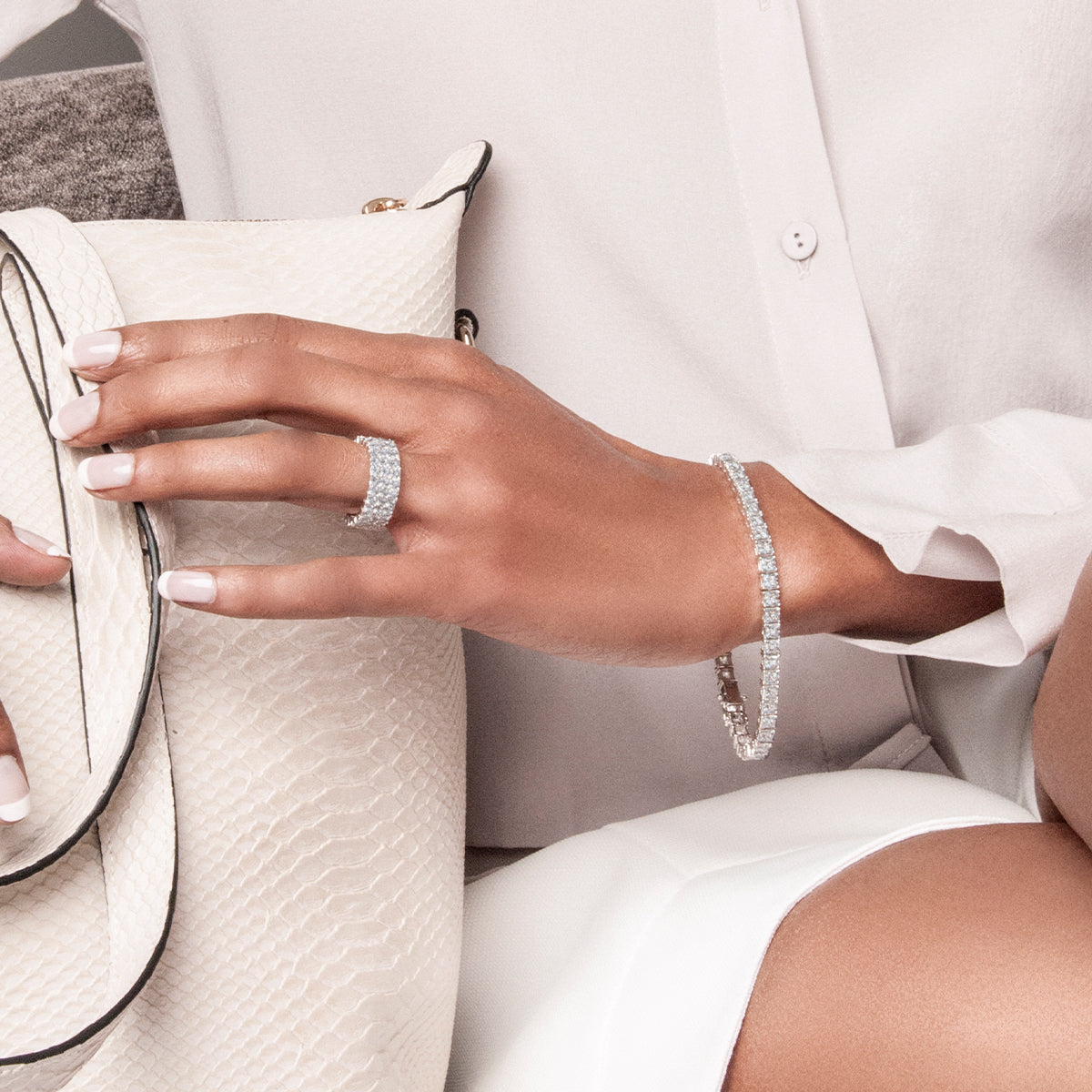
What differentiates ‘cut’ from the other 4Cs is that it is not entirely determined by nature. A diamond is cut and polished at the hands of a master craftsman who ensures that each facet is polished to perfect proportion and symmetry. The more precise and scientifically calculated the cut, the more beautiful and captivating the diamond becomes. It takes a master diamond cutter hours of analysis before the cut that will yield the most beautiful and valuable diamond, is determined. The cutting and polishing process takes several days and is vitally important – even if a diamond is highly graded in all of the other 4Cs, a bad cut or polish will leave it looking dull and lacklustre.
“The beauty of a perfectly cut diamond is not just in its exquisite aesthetics, but in the way it makes you feel,” says Yair Shimansky, founder and CEO of Shimansky.
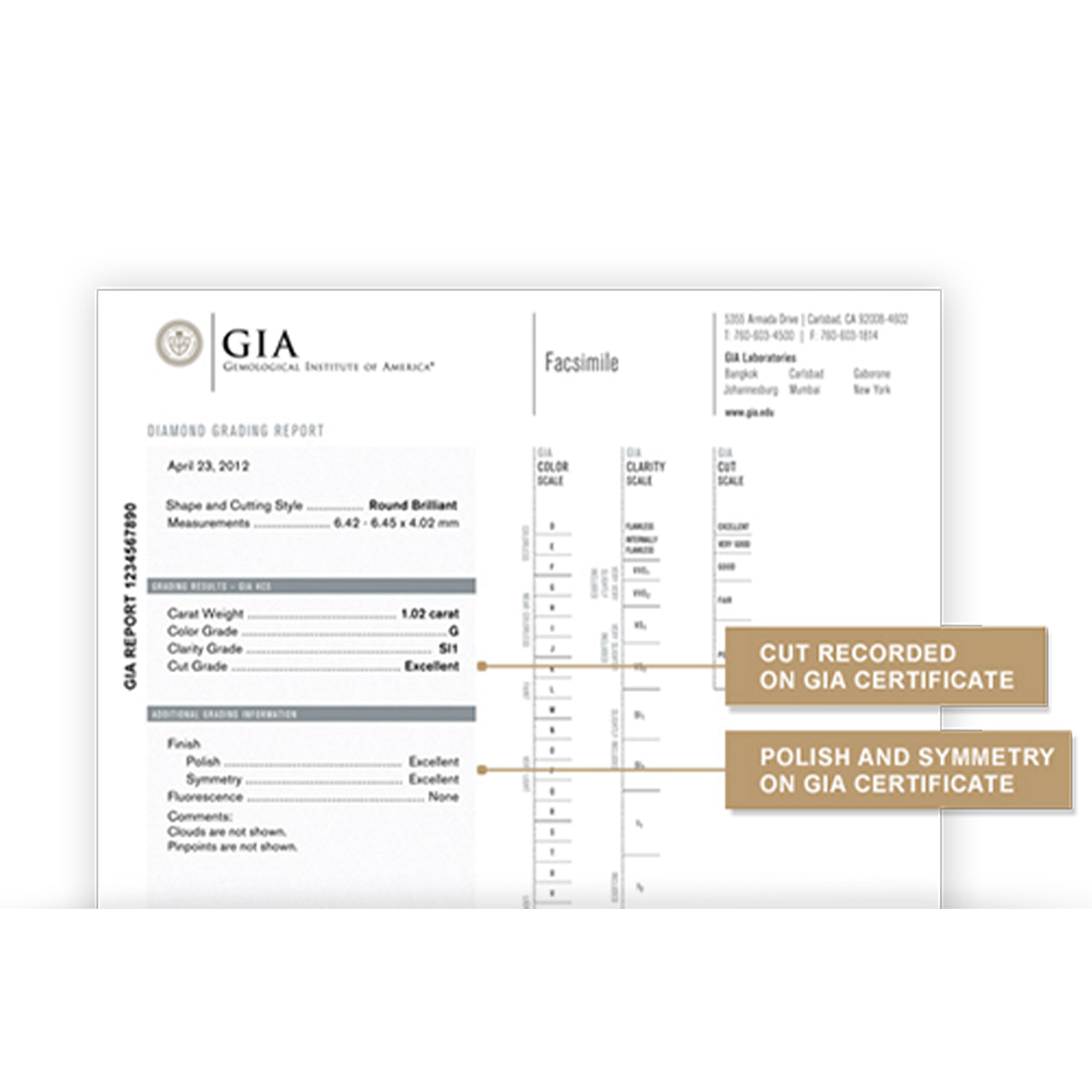
When choosing a diamond, have a look at the diamond certificate, which will state how the cut has been graded. A round brilliant cut diamond (the most popular diamond cut) is graded in the form of Excellent, Very Good, Good, Fair or Poor. A diamond that is cut too shallow will “leak” light out the bottom and if the cut is too deep, light will escape from the sides. In an ideal cut diamond with the correct proportions and symmetry, the light that enters the diamond is returned out of the table and crown of the diamond, giving it more fire, brilliance and scintillation.
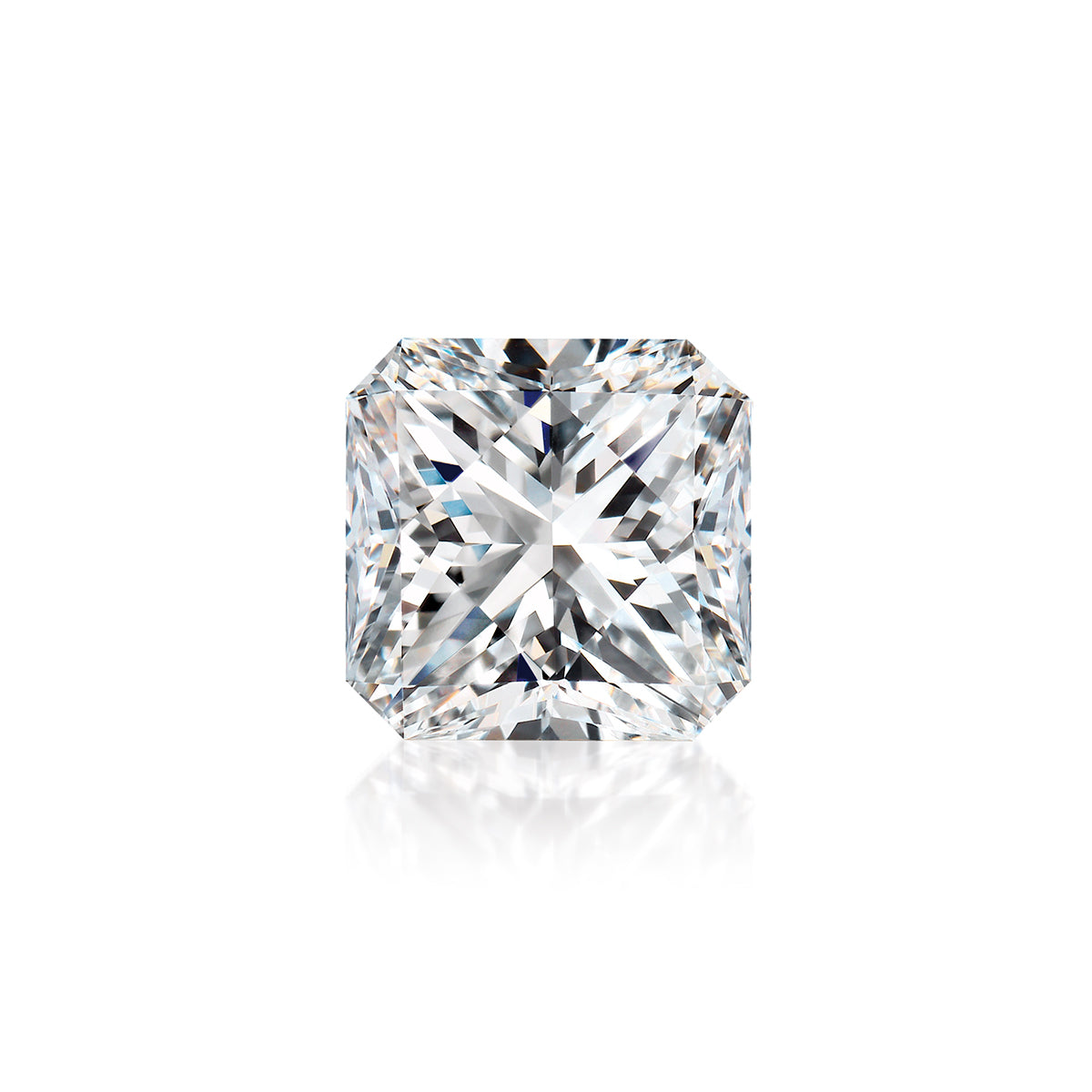
Shimansky is renowned for several signature diamond cuts, such as the My Girl diamond and the Brilliant 10 diamond. The Shimansky My Girl diamond is the world’s first square cut diamond with a diamond-shaped table. One-of-a-kind, it offers the perfect balance of fire, brilliance and scintillation, and as much as half the rough stone is sacrificed to create the spellbinding My Girl cut.
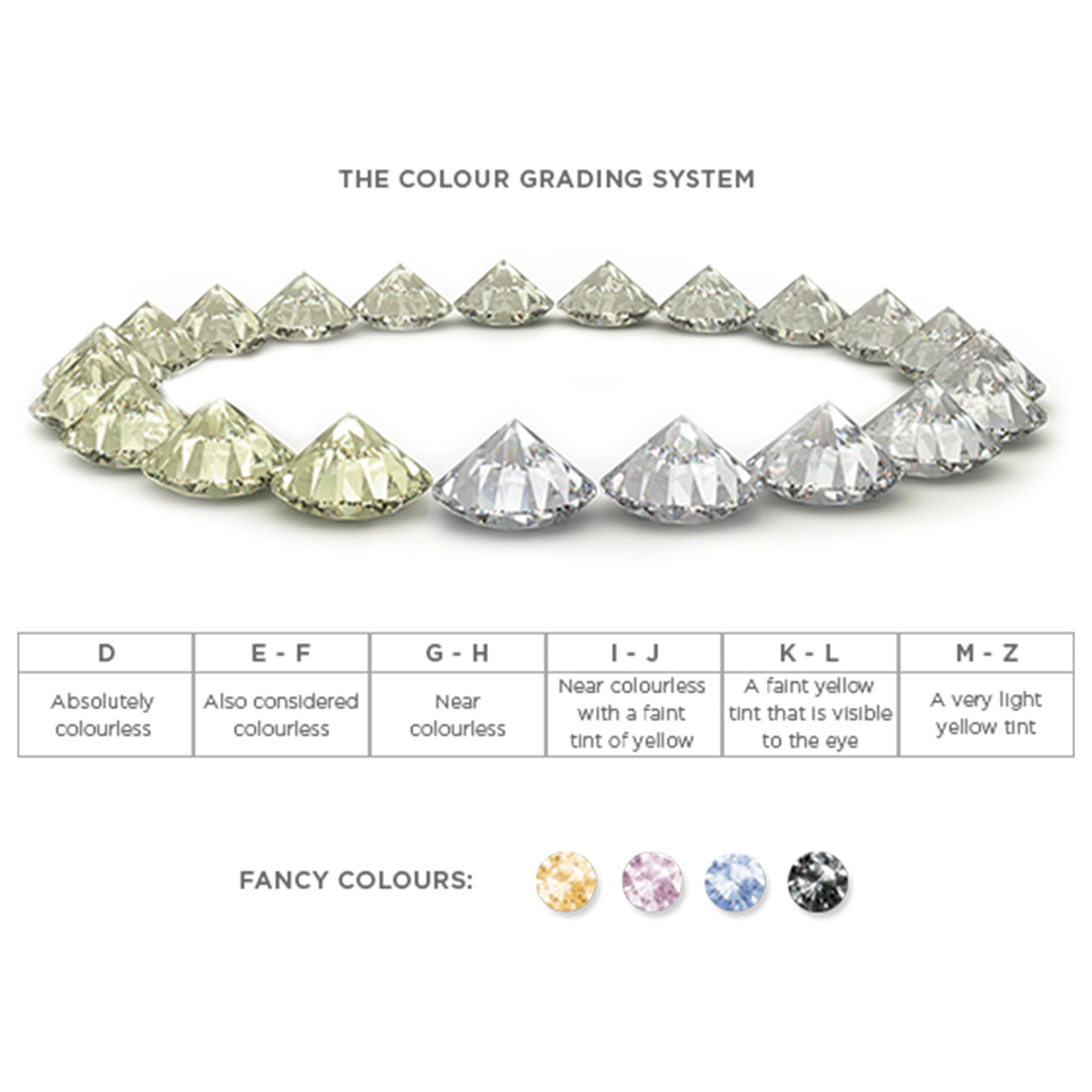
2. Diamond Colour
Diamonds come in different shades of colour and can range from colourless to varying shades of yellow. Even though most diamonds appear colourless to an untrained eye, many have slight tones of yellow or brown that affect its value. The closer a diamond is to colourless, the more rare and valuable it is.
White or colourless diamonds are graded on a colour scale from D (colourless) to Z (heavily tinted yellow). A universally-accepted and standardised colour grading system, it has been accepted since the 1950s. This grading is done in a special, controlled environment because the difference between each shade is very subtle and often not noticeable to the untrained eye.
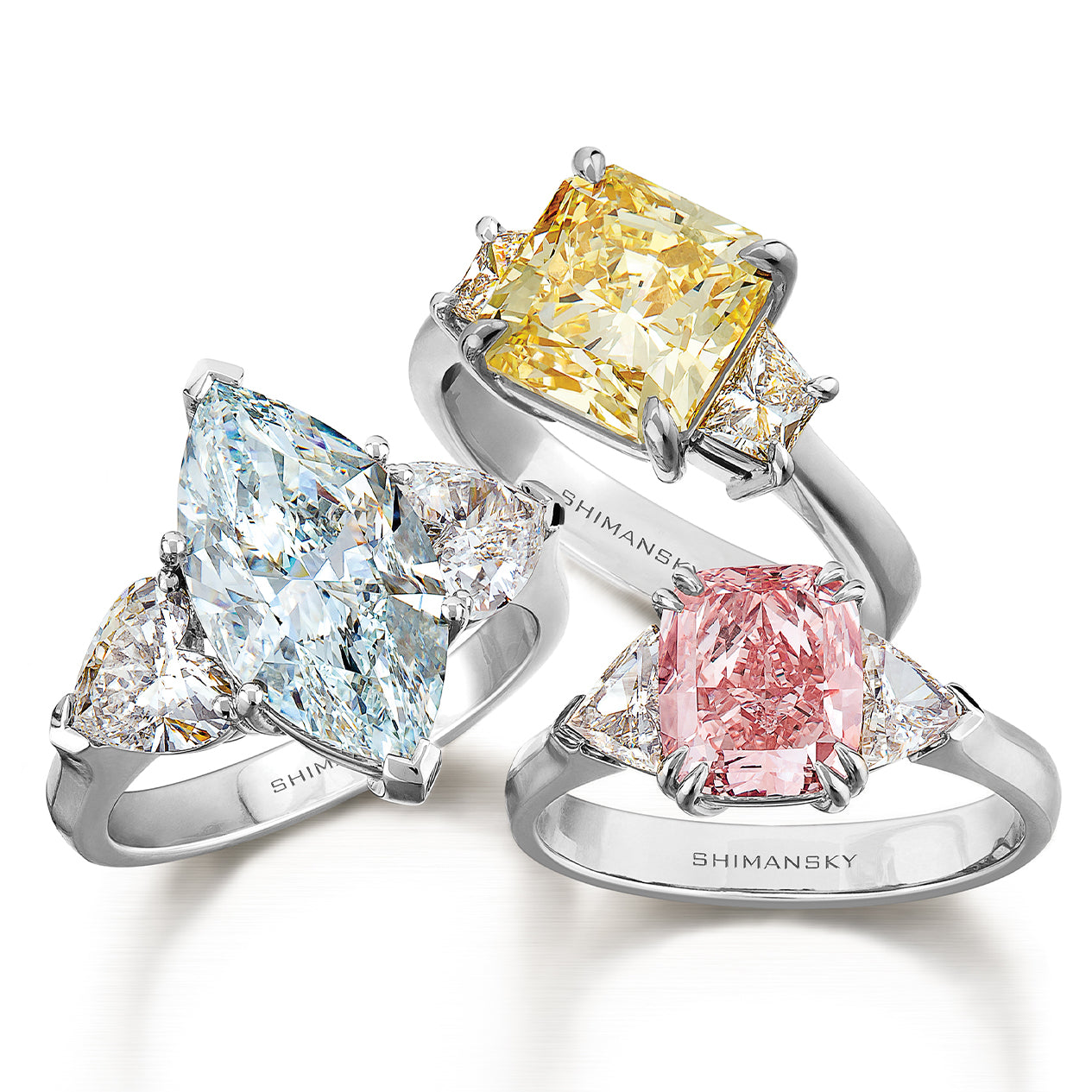
In addition to the D – Z colour scale, natural fancy colour diamonds such as deep yellows, pinks, greens and blues lie outside the white diamond colour range and are extremely rare and valuable. These natural fancy colour diamonds are graded according to the intensity of their colour.
The more intense and vibrant their shade, the higher their value. It’s important to note that a diamond with a yellow tint and a natural fancy colour yellow diamond are not the same. A white diamond with a yellow tint is subtler in colour, while a fancy colour yellow diamond comes in various shades of rich and vibrant yellow.
Each certified diamond’s colour grade is recorded on its accompanying certificate from the GIA, EGL or SGL. Remember to ask the store assistant for the diamond certificate when viewing a diamond.
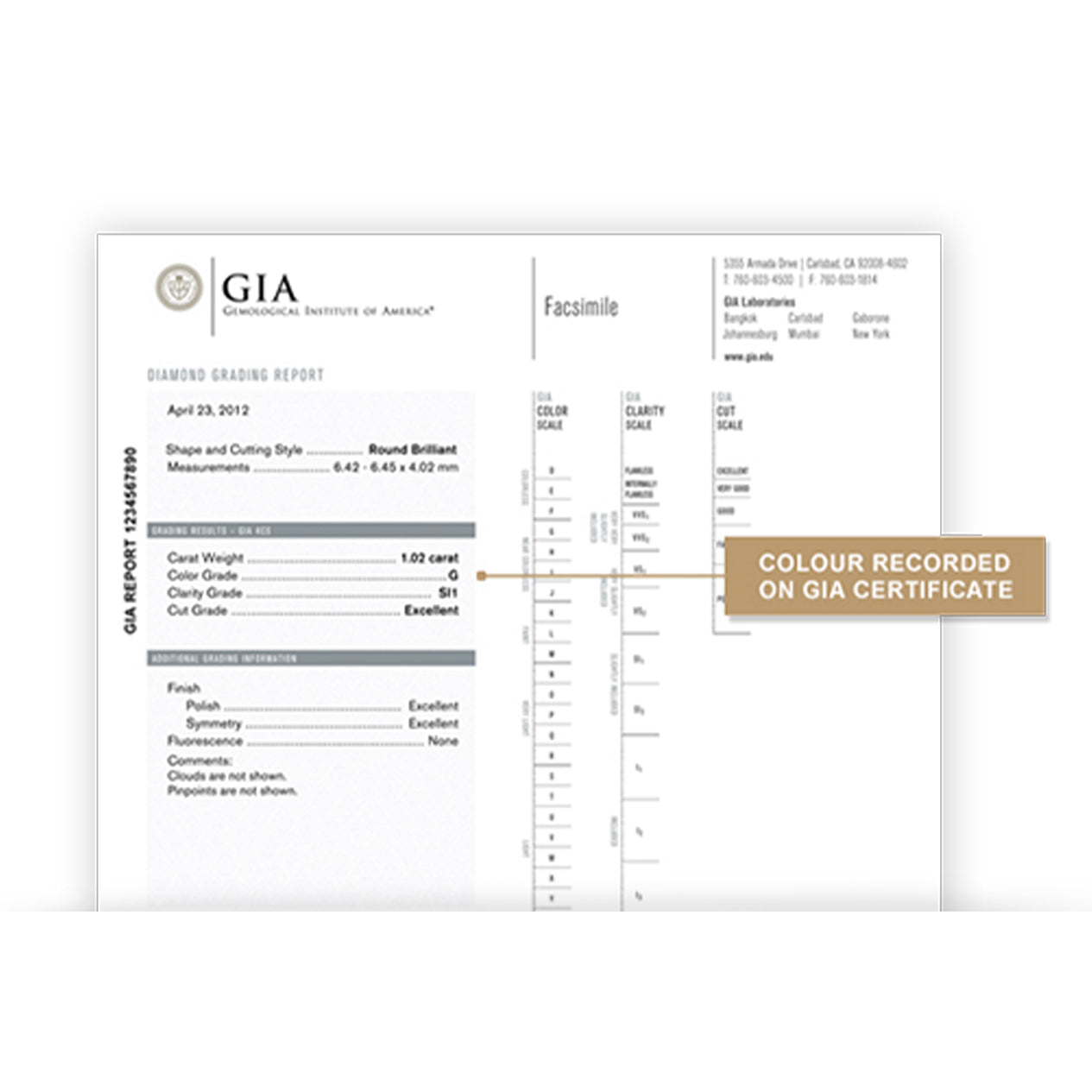
D: Absolutely colourless. The most rare and valuable. Less than 1% of diamonds mined worldwide are graded as colour D.
E – F: Also considered colourless, even though it is a minimal trace of colour that can only be detected by an expert gemmologist. Less rare than D, and more valuable than G – H.
G – H: Near colourless. To the naked eye these diamonds appear clear and colourless, although they also contain minute traces of colour. Less rare than E –F, but more valuable than I – J.
I – J: Near colourless with a faint tint of yellow. Less rare than G – H, but more valuable than K – L.
K - L: A faint yellow tint that is visible to the eye. Less rare than I – J, but slightly more valuable than M – N.
M – Z: A very light yellow tint, easily identified by the eye. Least valuable of the diamond colour grade.
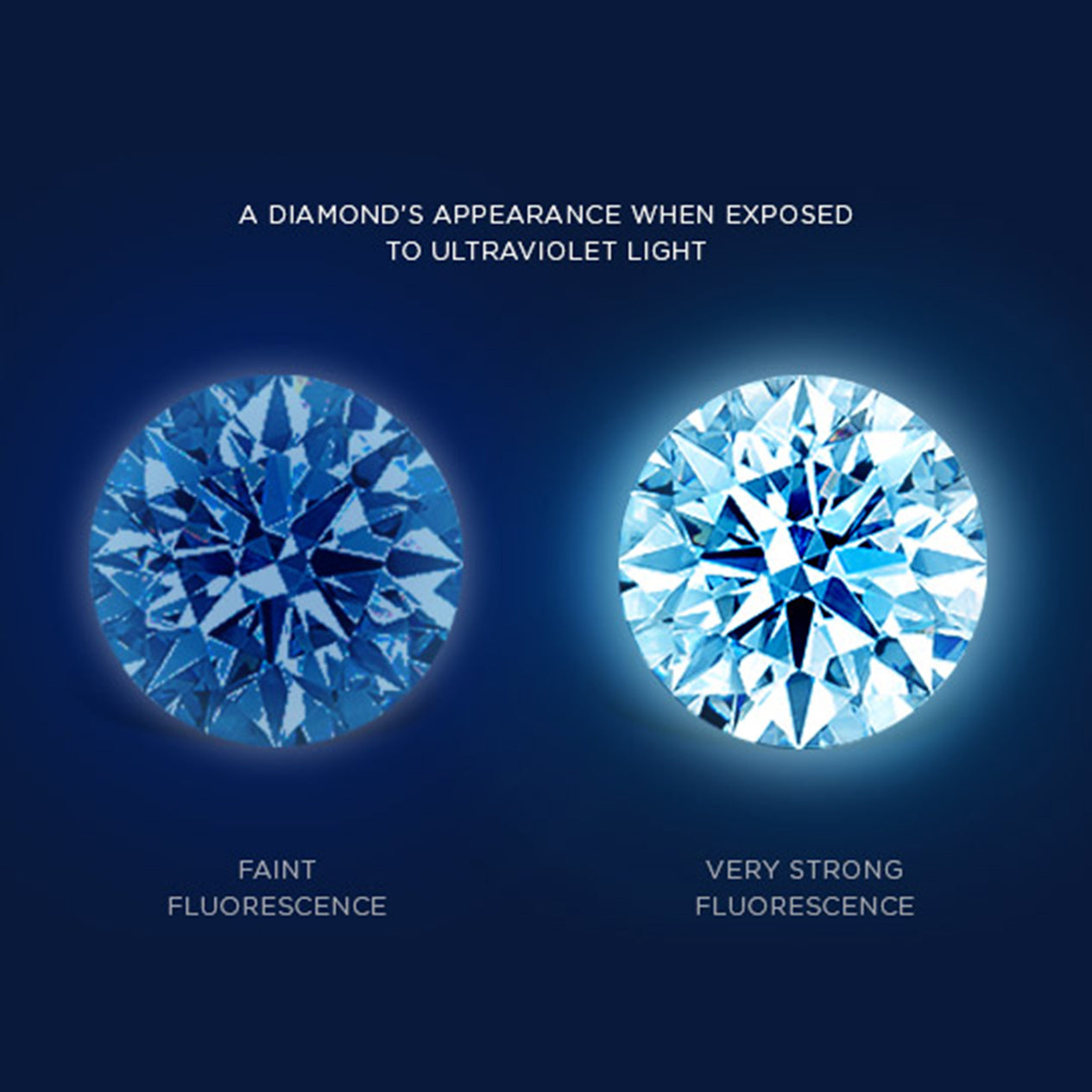
Fluorescence in a natural phenomenon affecting almost a third of all gem-quality diamonds. Often misunderstood, fluorescence is most simply described as a circumstance in which a diamond emits a soft-coloured glow when it is exposed to ultraviolet (UV) light.
We are exposed to UV light every day, through sunlight, and through the light produced by fluorescent lightbulbs. The characteristic of fluorescence is caused by the presence of Nitrogen and is a natural phenomenon – like colour, it is not determined by man’s manipulation of the rough gem.
When a diamond has fluorescence, there are two factors that should be considered:
Colour: Blue is the most common colour of fluorescence (95%), with yellow being the second most common colour. Diamonds with blue fluorescence tend to appear whiter than their grading suggests. This is a good thing for the buyer, as the diamond will have the appearance of a diamond that is worth much more.
However, diamonds with yellow fluorescence appear more yellow in colour when exposed to UV light, which is seen as a negative aspect, as diamonds with a yellow tint are worth less than diamonds that are near colourless. It could thus mean that a diamond with yellow fluorescence looks like a diamond that has a low colour grading, even though its true body colour is actually of a high grade.
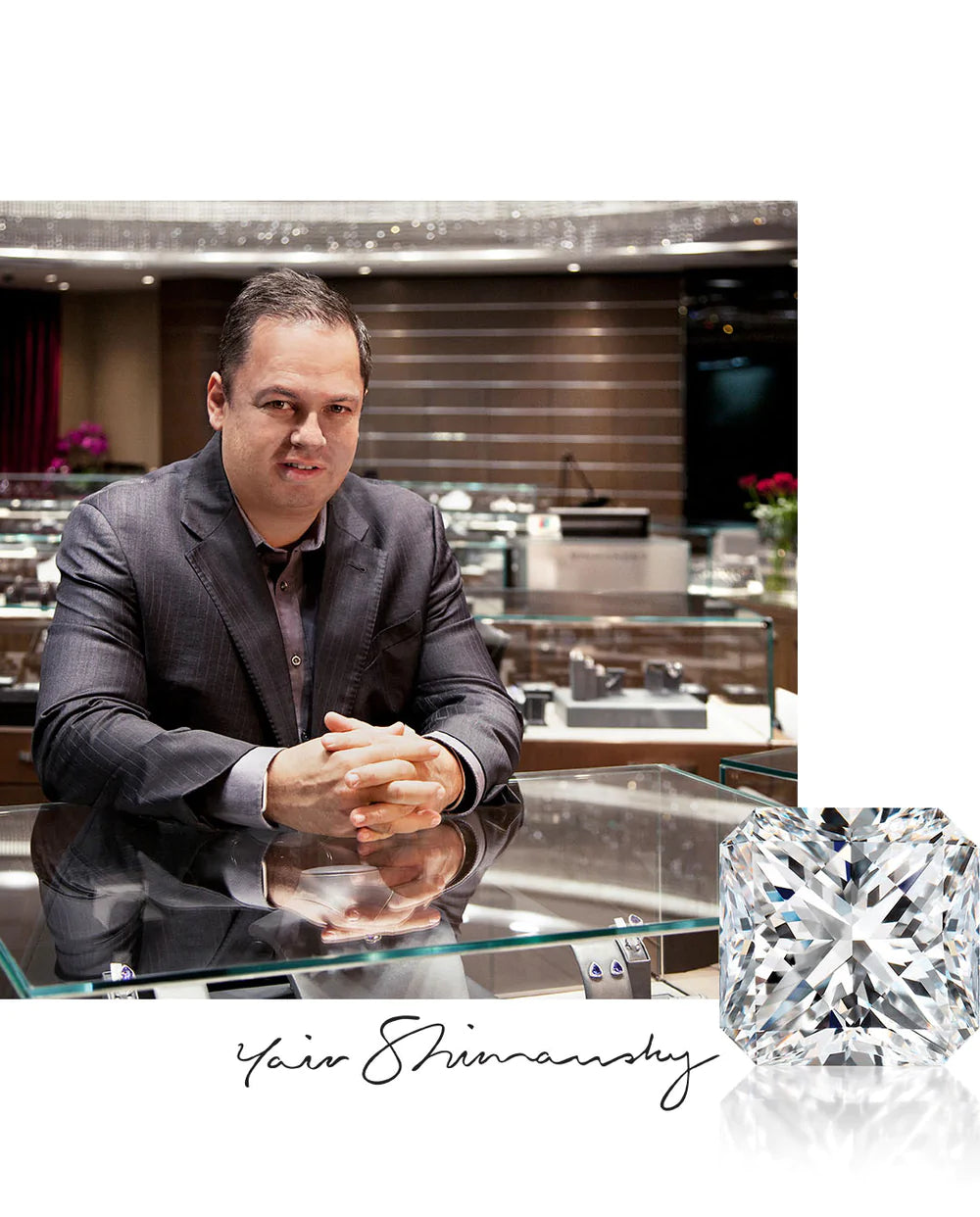
Strength: The strength of fluorescence varies from none, faint and medium to strong and very strong. Though some diamonds have very strong fluorescence and appear dull or cloudy even in regular lighting conditions, the majority of diamonds do not have a widely notable fluorescent appearance when looked at with an untrained eye.
Fluorescence affects the value of a diamond depending on its colour and strength. If there is a strong yellow fluorescence present, it may decrease the value of the diamond, while the presence of blue fluorescence may increase the value of a diamond that does not have a high colour grading (and thus has a yellowish tint).
Diamonds certified by the GIA or EGL clearly state on their Certificates of Authenticity whether there is a presence of fluorescence. If the diamond does not have fluorescence, it will be marked as “none,” and if fluorescence is present, it will be noted as either “faint,” “medium,” “strong” or “very strong.”
Because fluorescence is a natural phenomenon, it cannot be judged in isolation. Each diamond is unique, and fluorescence thus affects it in a unique way. When shopping for a diamond, always be sure to look at its unique characteristics and qualities and make sure you understand the grading on its certificate.
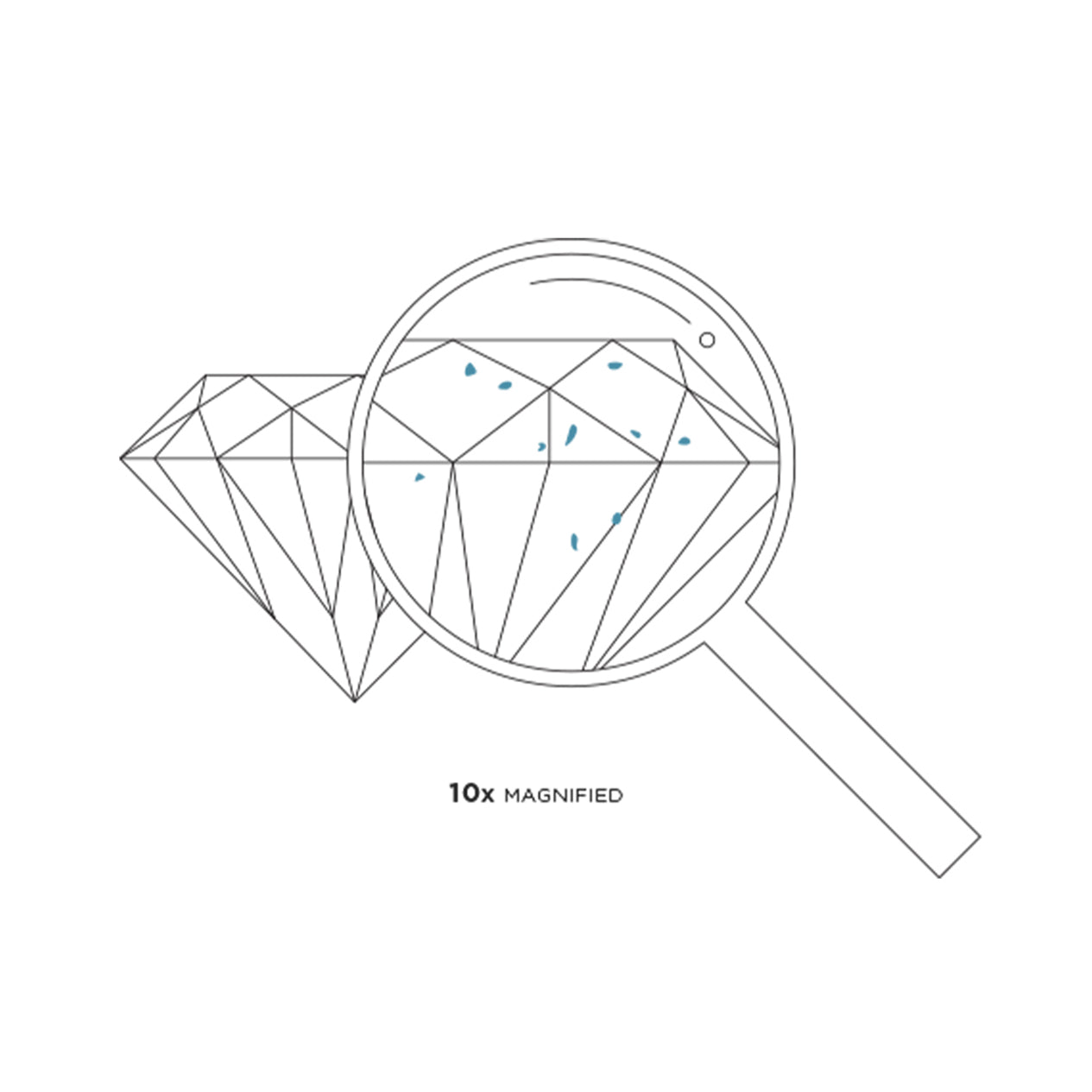
3. Diamond Clarity
Diamonds were formed billions of years ago, under conditions of extreme pressure and temperature. Almost all diamonds display tiny ‘birthmarks’, called inclusions, which occurred naturally when the diamond was formed deep within the earth. They are nature’s fingerprint and give each diamond its unique character.
Clarity refers to the presence of these natural inclusions or imperfections found in a diamond. The clarity of a diamond is determined by the size, number and nature of the inclusions present in the stone. Inclusions refer to imperfections that occur naturally inside the diamond itself – they are not man-made, and are believed to have formed during the crystallization process of the gem. Inclusions may take shape in the form of tiny white points, dark dots or feathery cracks.
Blemishes refer to imperfections that occur on the surface of the diamond as a result of the cutting and polishing process.
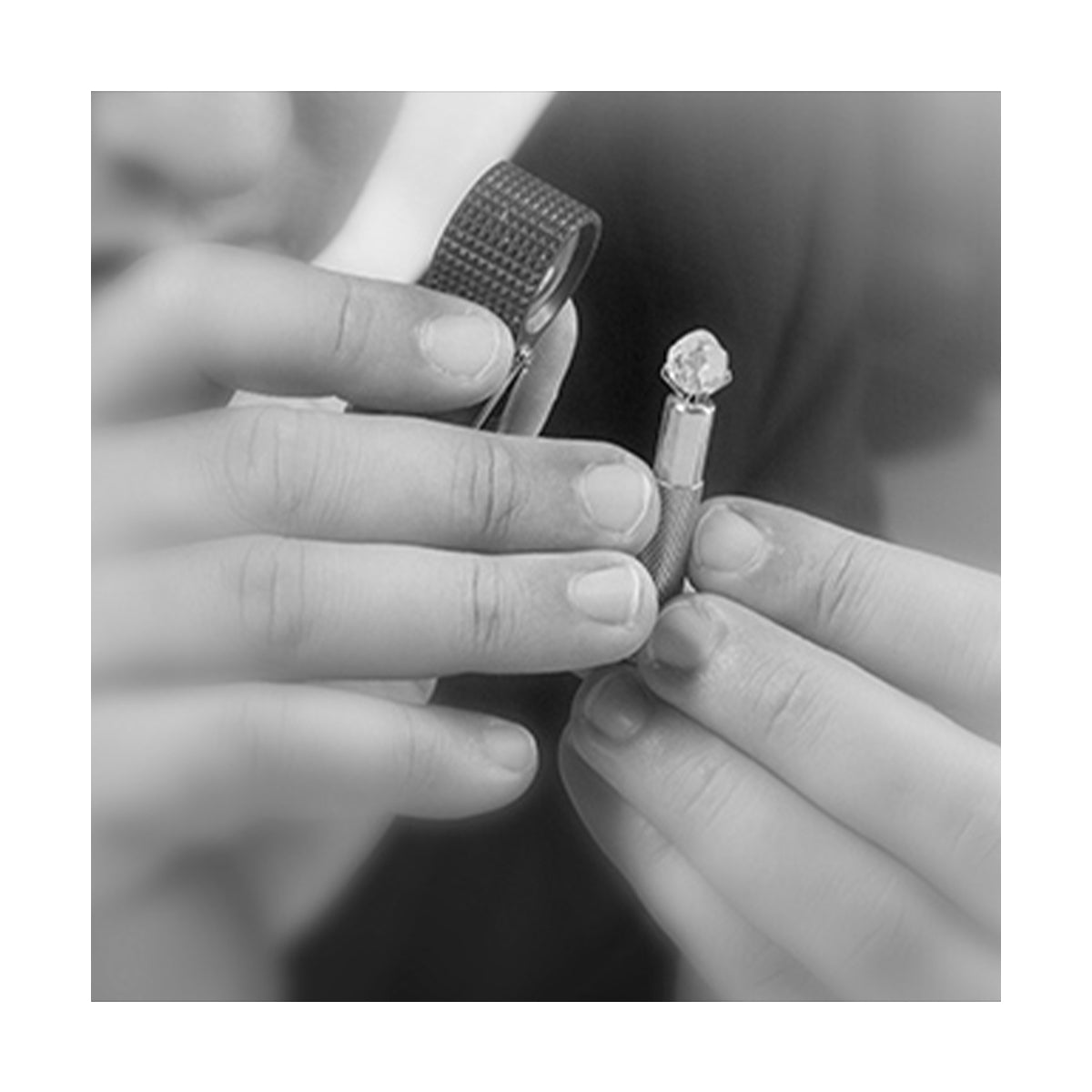
These can come about when a diamond cutter or polisher is not experienced, or has not yet mastered the craft.
- Most inclusions are not visible to the naked eye, so diamonds are examined under a 10x magnifying loupe to determine their clarity. The closer a diamond is to flawless with no inclusions visible under a jeweller's loupe, the more rare it is and the greater its value.
Flawless diamonds are so rare, that many jewelers spend a lifetime in the diamond industry without ever finding a completely flawless diamond.
- The position of the inclusion can also have an impact on the gem’s value. An inclusion situated directly below the diamond’s table, for example, will have a larger impact on the diamond’s clarity than an inclusion of the same size situated off the side of the diamond.
A diamond cutter will make every effort to cut the stone in such a way that the inclusion is not visible through the table of the diamond.
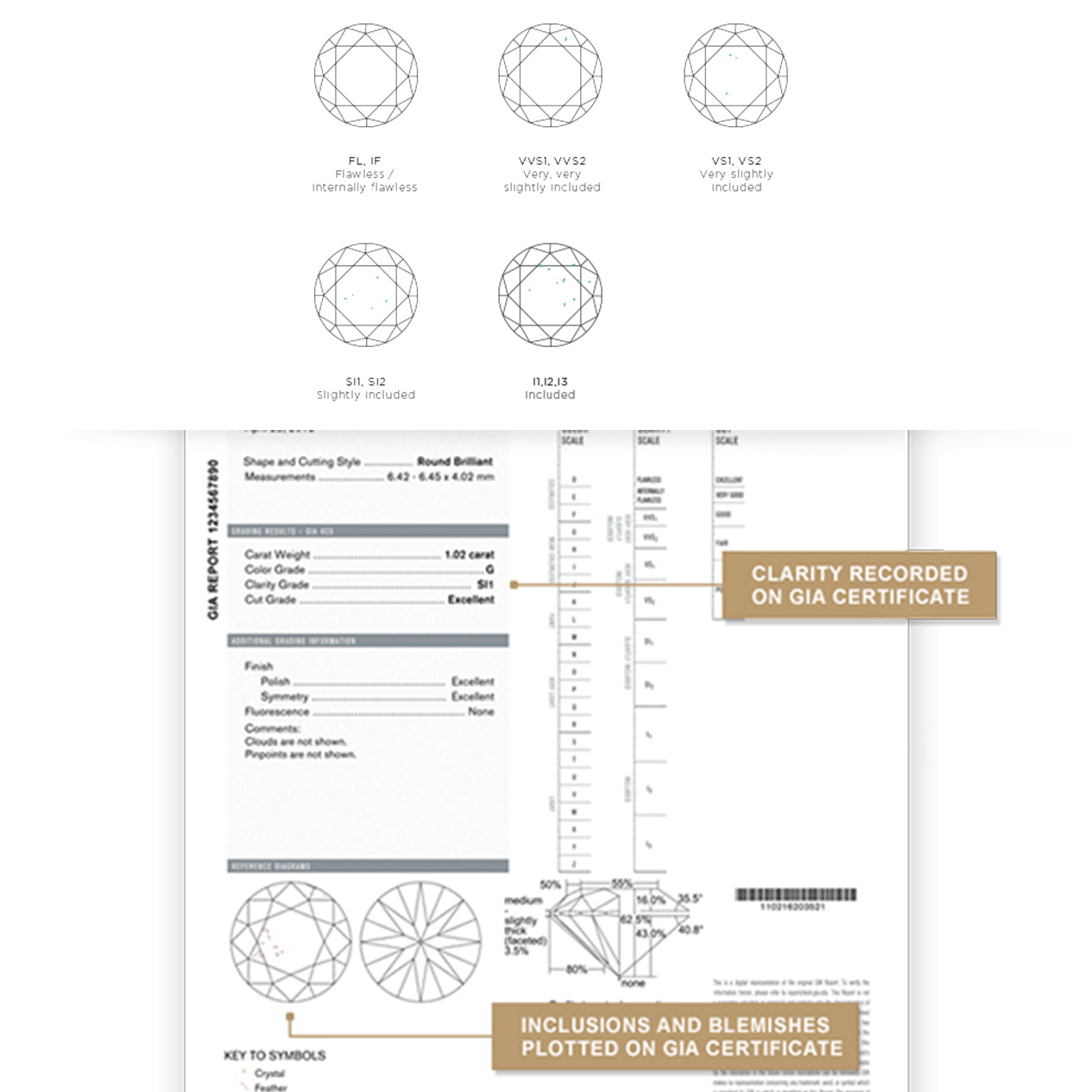
Though inclusions have a negative effect on the value of diamonds, there are two positive aspects of their existence:
- Inclusions give diamonds their unique characteristics. Diamonds are produced by nature, and like all things in nature, imperfections are common, and sometimes even welcomed. Just like each snowflake is unique, there are no two diamonds on Earth that are exactly the same.
Inclusions contribute to a diamond’s individuality, and are often helpful in identifying a gem. They also provide scientists and gemologists with valuable information about how a diamond was formed.
- Inclusions can also help a gemologist to separate a real diamond from an imitation. It can be difficult to separate a flawless diamond from an imitation diamond, but when natural inclusions are present, it indicates the authenticity of the stone’s origin.
Blemishes refer to imperfections that occur on the surface of the diamond as a result of the cutting and polishing process.
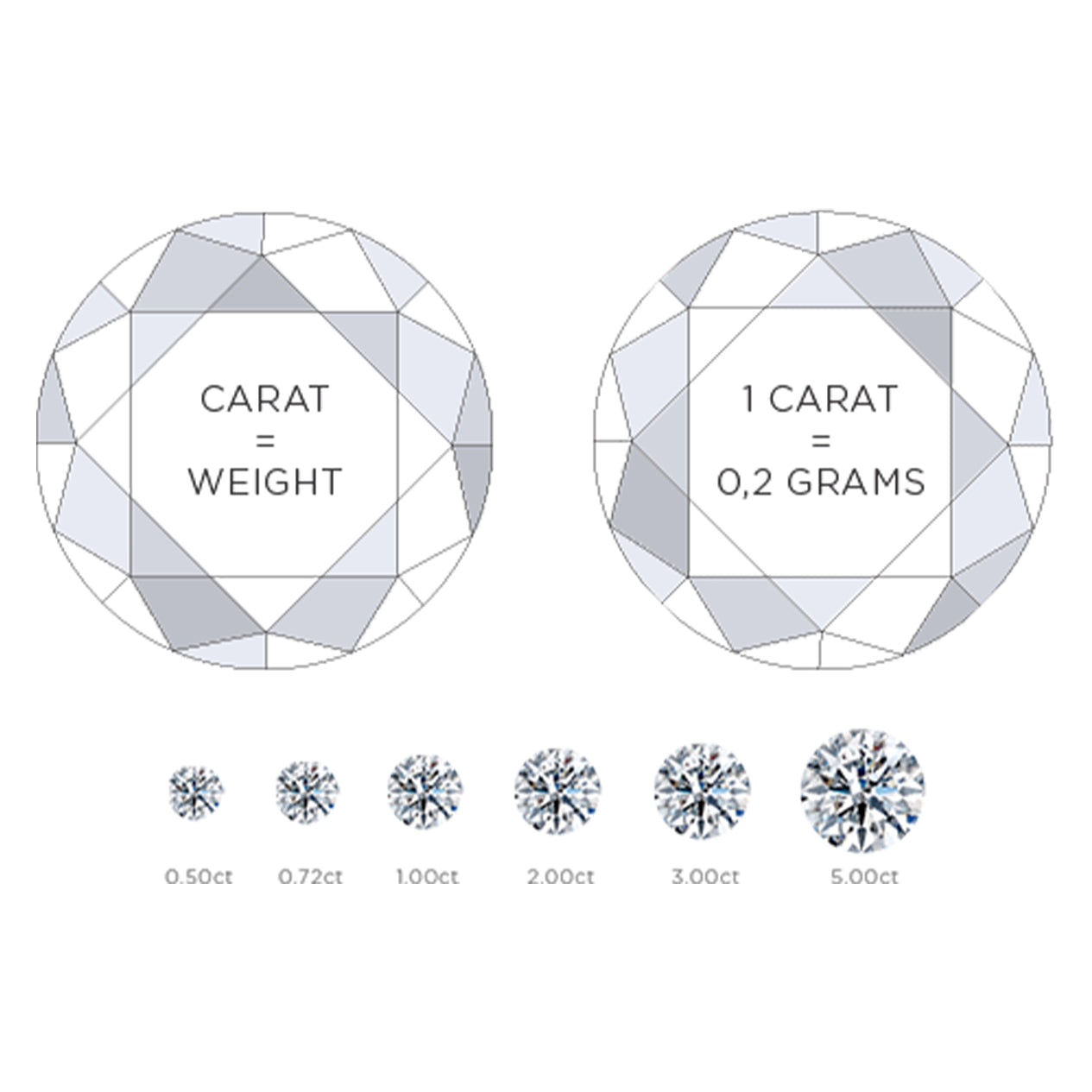
4. Carat Weight
Carat is the standard unit of weight used for gemstones. 1 carat = 0.2 grams, or 200 milligrams. The higher the carat, the more rare and more valuable the diamond. Just as currency is divided into smaller units, a carat is divided into 100 points. For example, half of a carat will weigh 0.50 carat (ct). A quarter of a carat will weigh 0.25 carats (ct), and so on.
Does size matter? Large diamonds are rarely found in nature so they are more valuable than smaller diamonds of the same colour and clarity. This means that the price of a diamond will increase exponentially as the carat size of the diamond increases. Diamonds of one carat or larger are so rare that they represent only 1% of all the diamonds mined worldwide. Many of the world’s largest diamonds were found in South Africa. “South Africa has produced some of the world’s largest, most valuable and memorable diamonds and today maintains its position as a top diamond producer,” says Yair Shimansky, Founder and CEO.
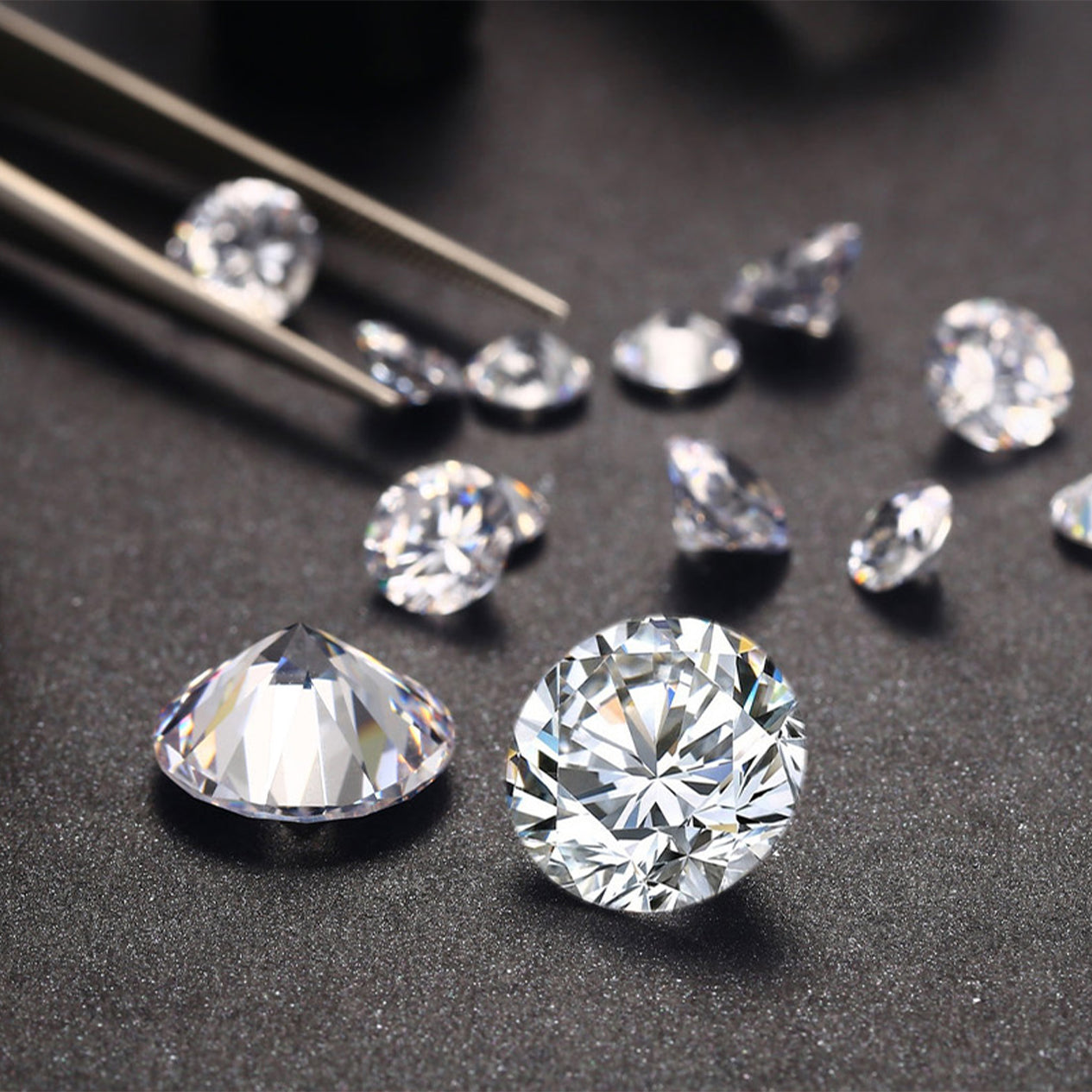
Can Shimansky answer the question on every women's mind?
However, big does not necessarily equal better. While the size of a diamond has the greatest influence on the price, the cut, colour and clarity will affect a diamond’s brilliance and beauty. A diamond with a large carat weight, but with a low colour, cut and clarity grading could, for example, be more less valuable than a diamond of lower carat weight, but with exceptional colour and clarity.
Similarly, two diamonds of equal carat weight could vary significantly in price if one were to have a higher cut, clarity or colour grading.
Carat weight can also be measured in grams
Though the carat weight of a diamond gives an indication of its size, weight and size should not be confused with one another: The size of a diamond is also dependent on its cut and shape. It is quite possible for two diamonds of the same carat weight to appear to be different sizes. Each individual diamond’s proportions (such as the table and depth percentages) must be taken into account to determine its size. A shallow diamond with a wide table may appear larger than a diamond with a deeper cut, and a narrower table, yet they may have an equal carat weight.
An elongated shape such as a Marquise tends to maximise carat weight, as it makes the stone appear larger than that of a traditional round shape of a diamond of equal weight. The term carat originates from the seed of the carob tree. In ancient times, before scales and units of mass were invented, diamond traders compared the weight of a diamond to the seeds of the carob tree. Each carob seed had a uniform weight, equal to 0.20 grams or 200 milligrams and hence determined the weight of the diamond. The carat metric was officially adopted by the United States in 1913, with other nations soon following suit. Today, the carat is a universal metric measure, with all nations adhering to the exact same measurement.
That means that when you purchase a diamond, it will have the same carat weight everywhere in the world. Shimansky offers a wide variety of diamond sizes to meet all your jewellery creation needs: From larger diamonds weighing over a carat, to the smallest of diamonds found in a micro setting, and everything in between. Shimansky diamonds are cut to maximise their beauty and their brilliance – not to emphasize their size. That means that all Shimansky diamonds, regardless of their size, are cut and polished with the same passion and attention to detail. Whatever the size of the diamond that captures your heart, you can rest assured that it was cut and polished with the utmost of care, and that it displays the maximum amount of fire, brilliance and scintillation.
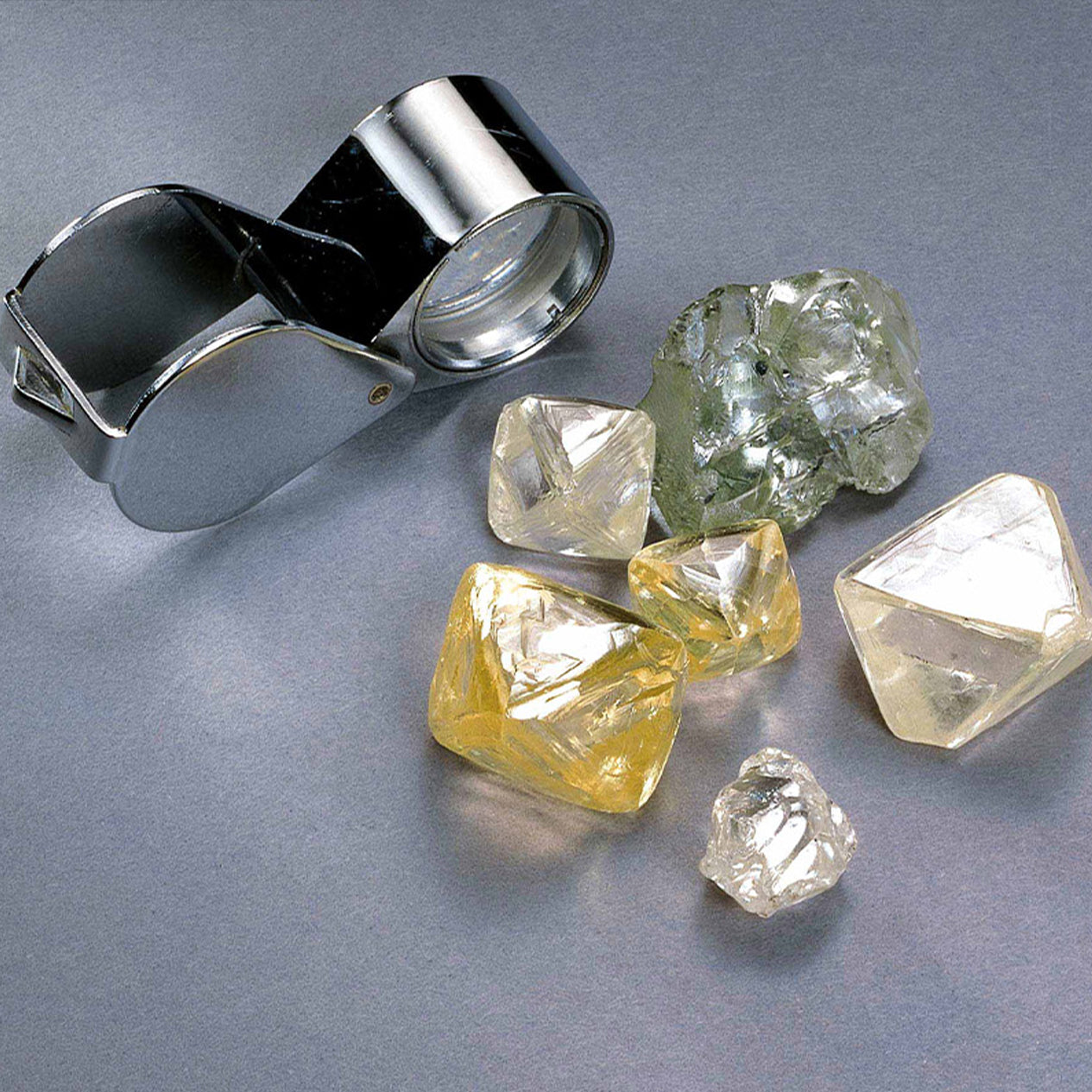
Selecting the correct carat weight is very important
When selecting a diamond size for an engagement ring, it is important to take the wearer’s ring finger into consideration. A long, slender ring finger will make a diamond appear larger, while a shorter finger could make it appear smaller. Similarly, the diamond’s setting can also have an impact on the appearance of the diamond’s size. A delicate setting tends to enhance a diamond’s size and prominence, while a bulkier setting could make the diamond appear smaller. Whilst it is important to take these factors into consideration when selecting a diamond size, one must remember that they only have an effect on the appearance of the size of the diamond; they do not alter the carat weight in any way.
The carat weight of a certified diamond is recorded on its accompanying certificate from the GIA, EGL or SGL (proving its authenticity). Remember to ask the store assistant for the diamond certificate when viewing a diamond.
A GIA DIAMOND GRADING REPORT WILL ALWAYS SHOW CARAT WEIGHT.
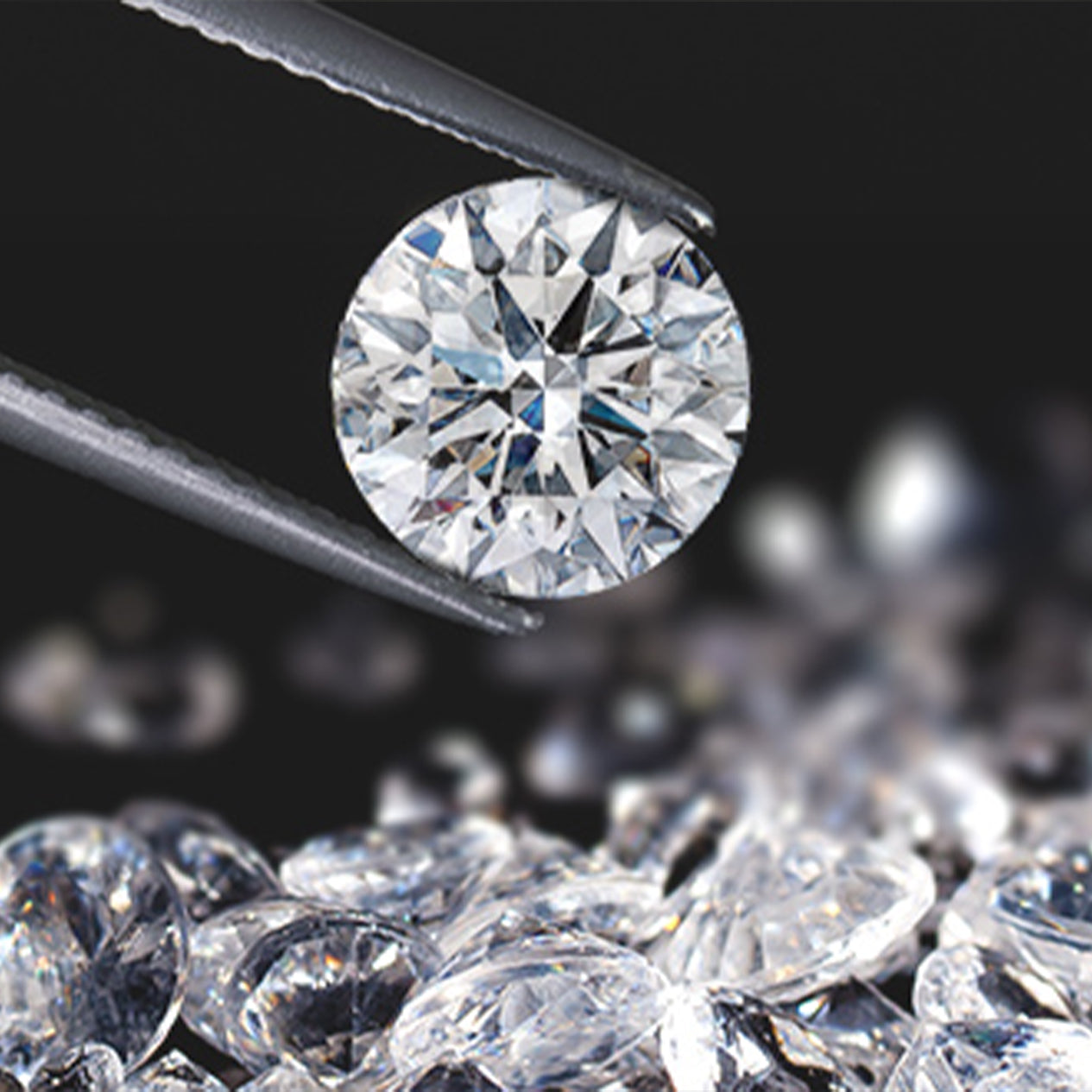
5. Confidence
Equally important to the cut, colour, clarity and carat weight of a diamond is the 5th C – Confidence.
Purchasing a diamond is a special occasion, one that usually involves a lot of deliberation and planning on the buyer’s side. Confidence in knowing that you are buying your diamond through a reputable jeweller and that the diamond was sourced ethically is absolutely vital when selecting your diamond or diamond jewellery creation.
The most important driver in life, is love. Our lives are filled with beautiful moments in which we celebrate our love, such as engagements, weddings, anniversaries and birthdays, to name but a few. There is so much more to a diamond than its physical properties – and at the heart of every diamond is a story.

Whether it is the story of how your partner created the perfect engagement, or the beautiful memory of a golden wedding anniversary, a diamond celebrates the special moments that we wish could last forever.
When selecting your diamond or jewellery creation, it is important to choose a reputable jeweller that recognises the magnitude of your occasion, and the importance of finding the diamond jewellery creation that captures your heart.
Shimansky is one of the only jewellers in South Africa to source rough diamonds direct from the South African mines, and to cut and polish their diamonds in-house. You can trust that every step, from the sourcing of rough diamonds from ethically-bound mines to the cutting and polishing process is handled by the best in the industry to ensure that you own a remarkable diamond – a Shimansky diamond.
The Shimansky diamond cutting and polishing workshop is located in the Clock Tower at the V&A Waterfront, alongside the impressive Shimansky diamond showroom, and Cape Town’s only dedicated diamond museum, The Cape Town Diamond Museum.
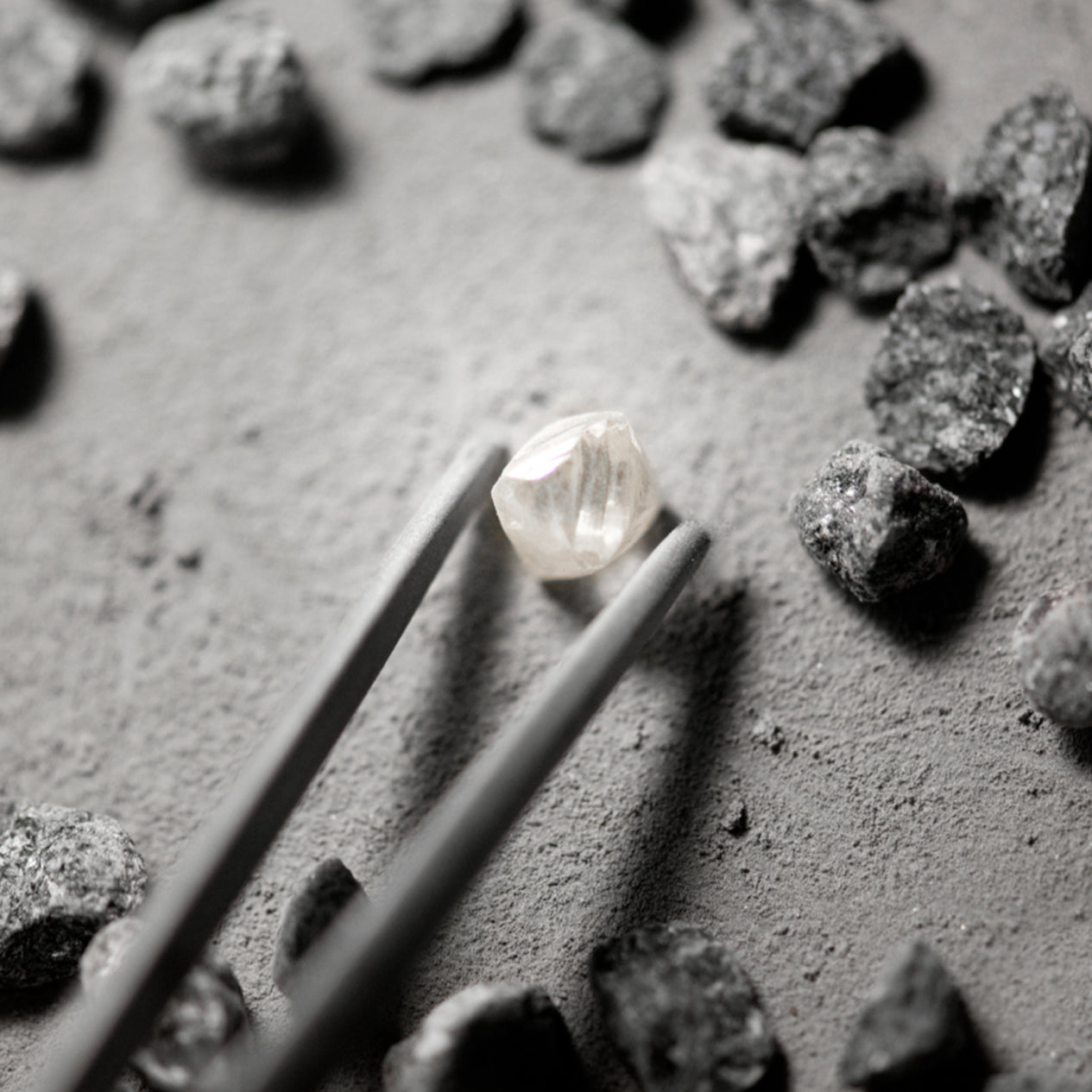
“Cutting and polishing our diamonds in-house creates value every step of the way,” says Shimansky founder and CEO, Yair Shimansky. Because the diamond stays within the Shimansky family from its rough state, all the way to its final setting in a jewellery creation, it is possible to control the quality of its cut and polish, as well as the integrity in which the work is done.
Shimansky diamonds are graded by international and independent grading laboratories such as the Gemological Institute of America (GIA) and the European Gemological Laboratories (EGL). Such certificates serve as proof of the diamond’s grading, and also contains vital information such as the proportions of the diamond, details of its inclusions, and notes on its polish, symmetry and fluorescence.
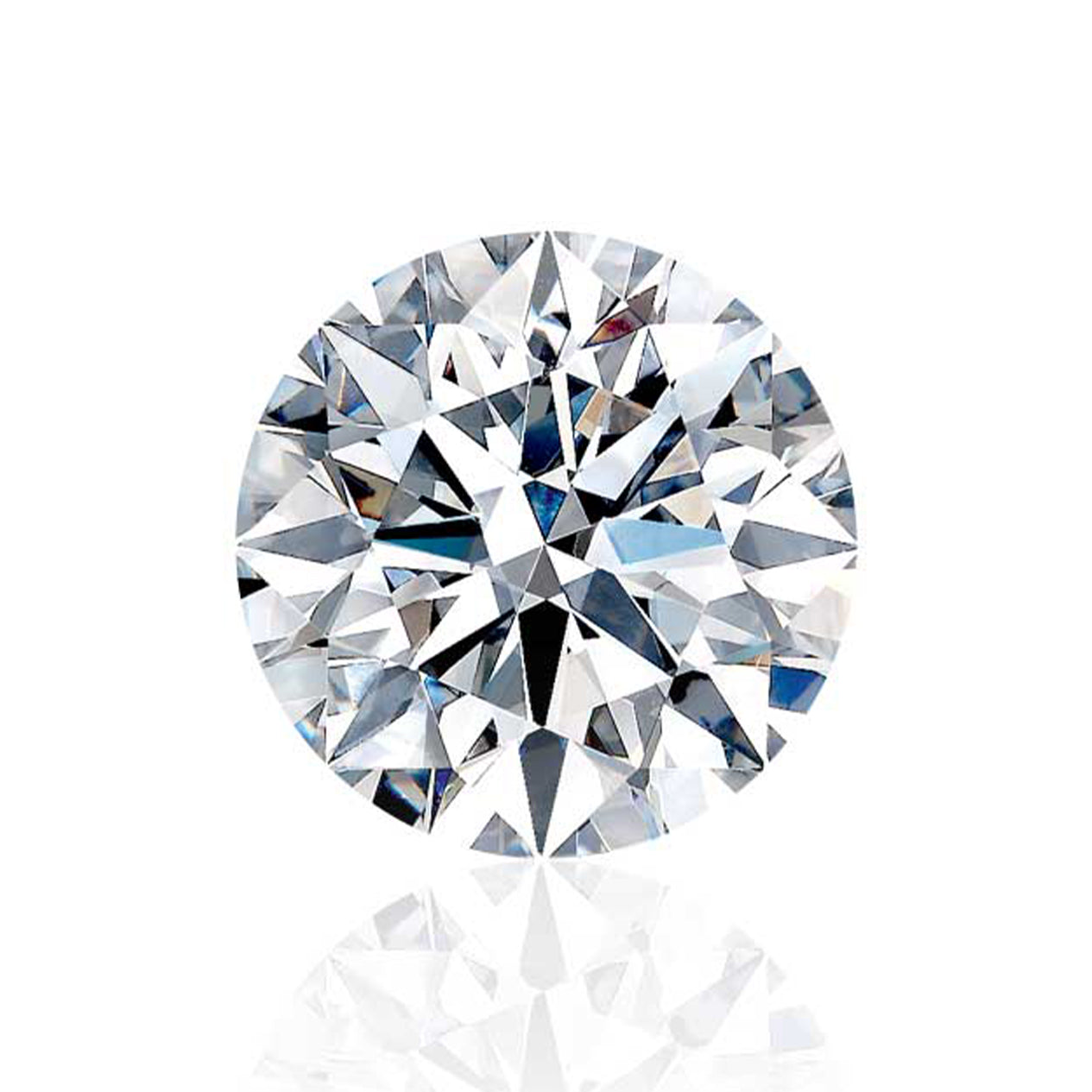
When purchasing a diamond, it is important to select one that has been cut and polished to maximise its potential in terms of brilliance. Though colour, clarity and carat weight is determined by nature, it is the diamond cutter who is responsible for cutting the diamond in such a way that it yields a high grading for its cut.
Any blemishes (nicks and scratches on the surface of the diamond) accidently caused by the diamond cutter will affect the diamond’s value greatly. At Shimansky, a team of world-class experts with a wealth of experience and skills work with the utmost concentration and dedication to ensure that each and every Shimansky diamond is cut to realise its full potential.
The continuous pursuit of perfection is the driver that sets the standard for all Shimansky jewellery creations.
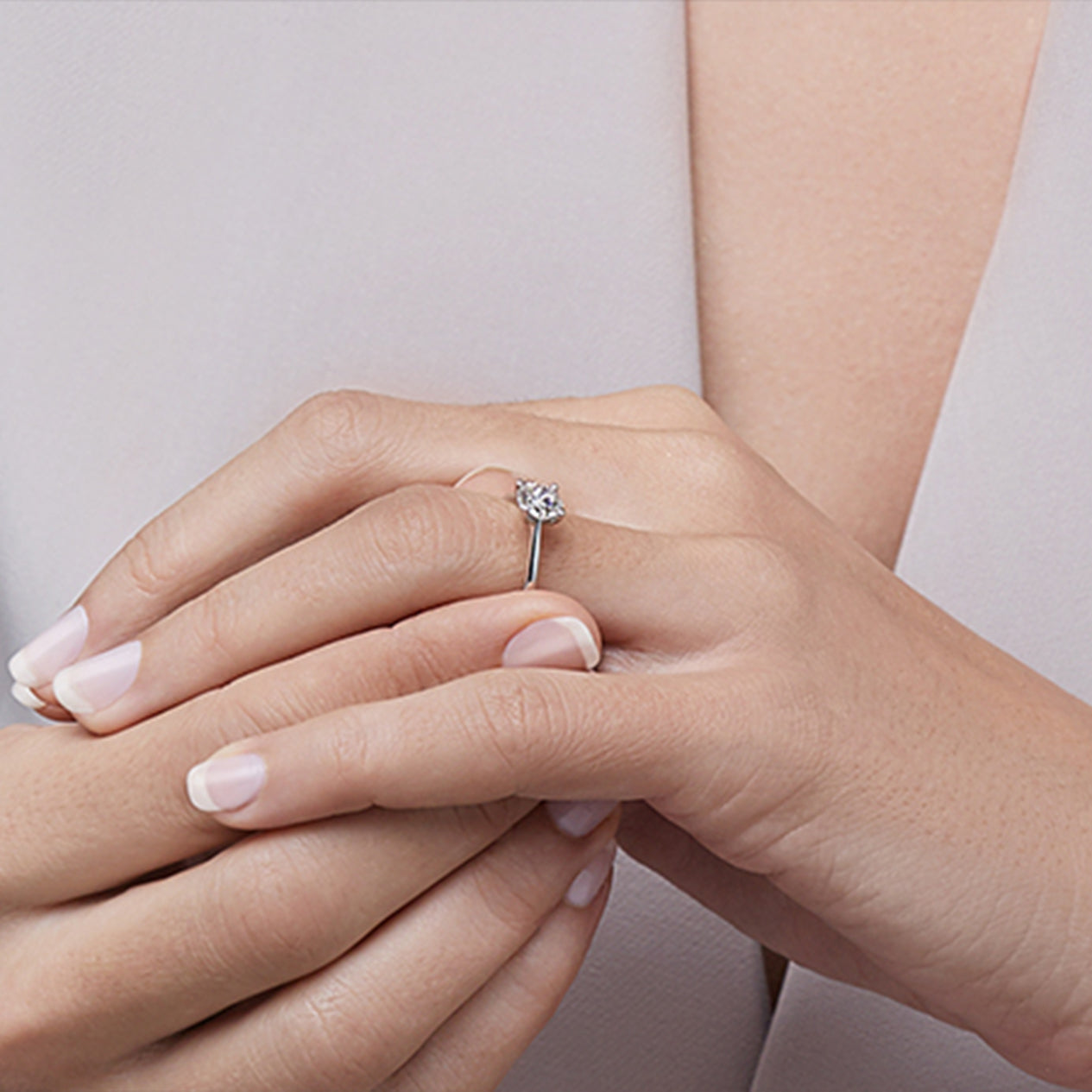
At Shimansky, we understand the importance of celebrating the special moments in people’s lives. The customer is buying more than just a diamond – they are buying a moment of fire that will stay with them for the rest of their lives,” Shimansky explains. When embarking on the journey of finding the diamond that is perfect for you or your loved one, you’ll be guided by a team of passionate and dedicated Shimansky professionals.
Just like every diamond is unique, each person has their own unique taste and preferences. Shimansky offers a wide variety of diamond jewellery creations: From patented original designs such as the world-renowned Millennium Diamond Ring, to classic Solitaire Diamond Engagement Rings, there is a style and cut to capture every heart.
The beauty of a Shimansky original is only truly recognised when it is worn by the one it was meant for,” says Yair Shimansky. When embarking on your diamond-buying journey, always select a jewellery who has your best interest at heart and who will guide you in finding exactly what you are looking for.
Featured collection
Shimansky Engagement Rings
